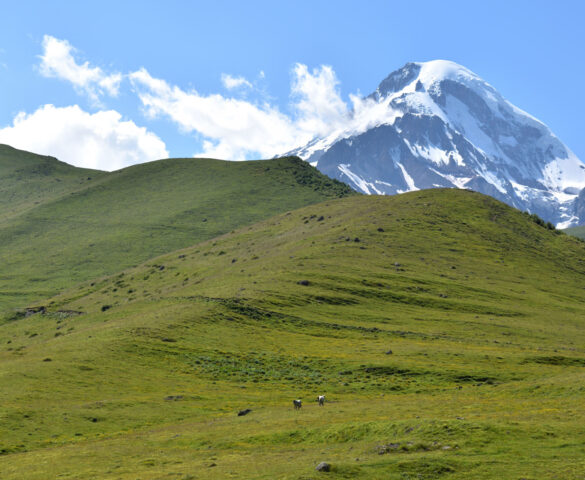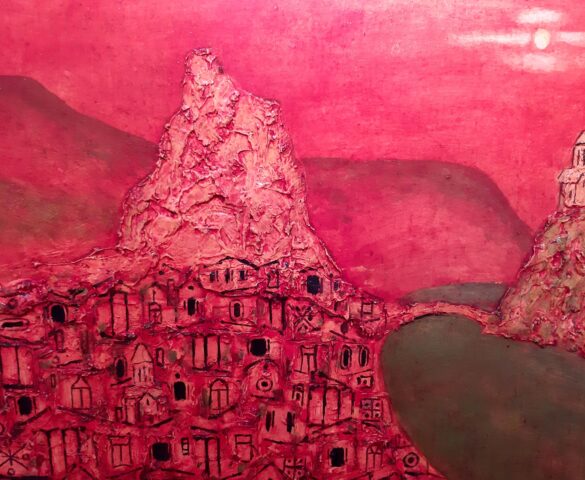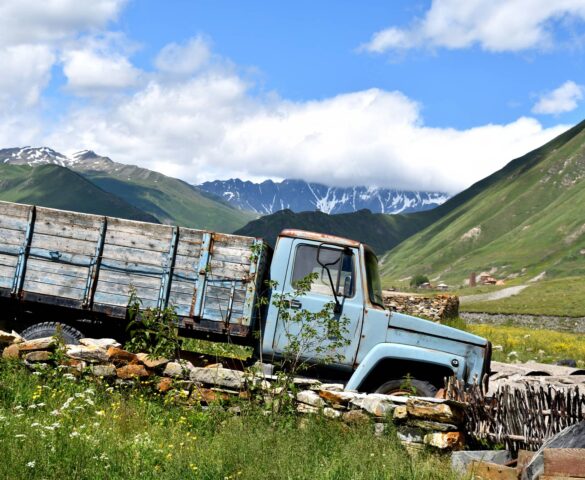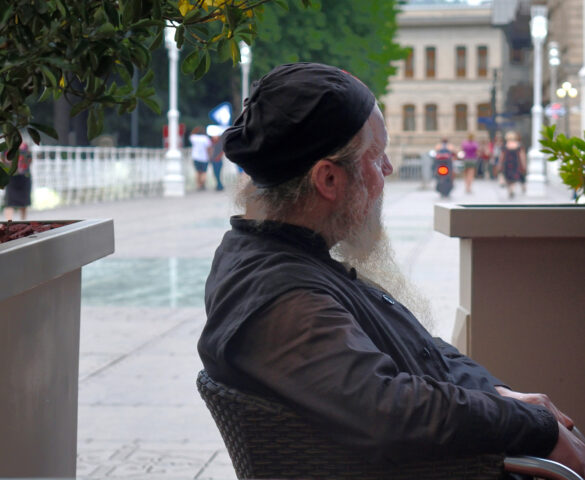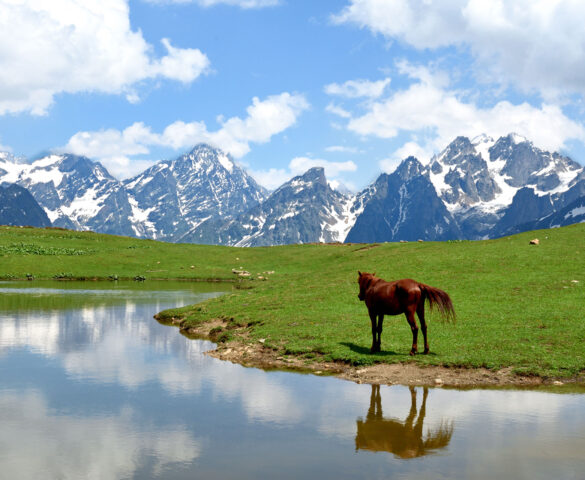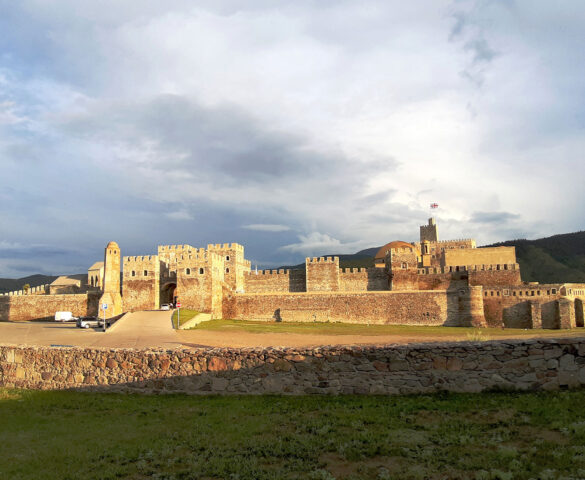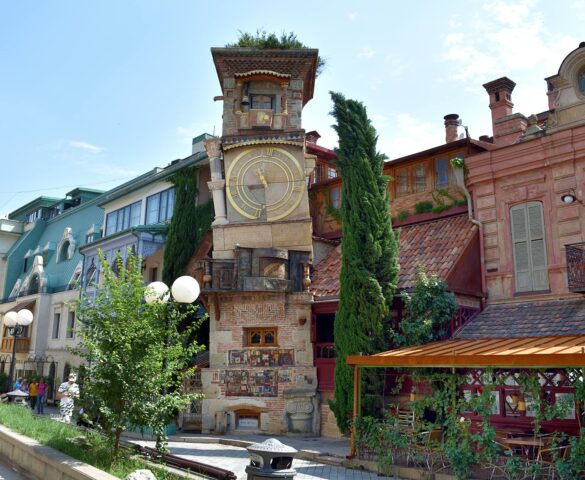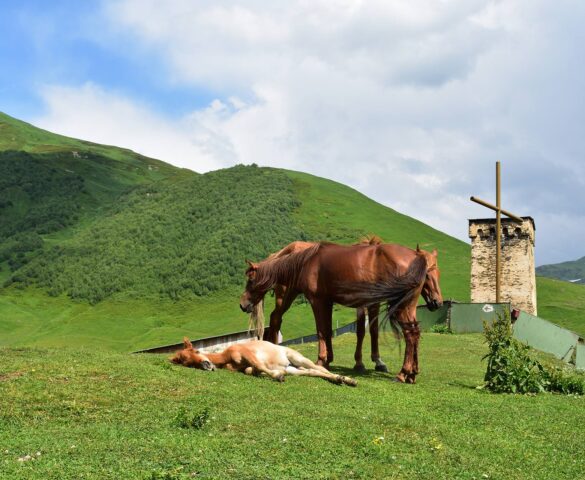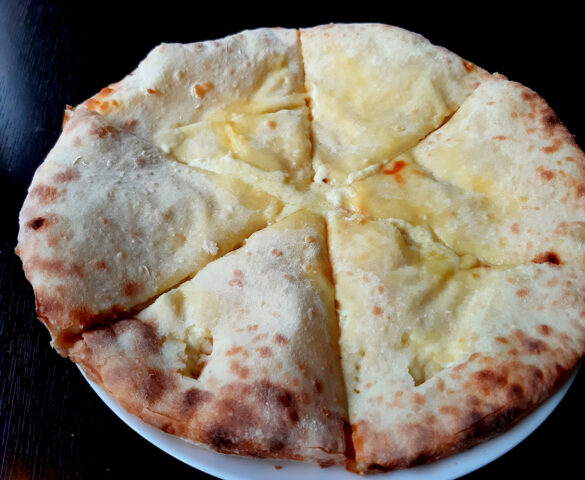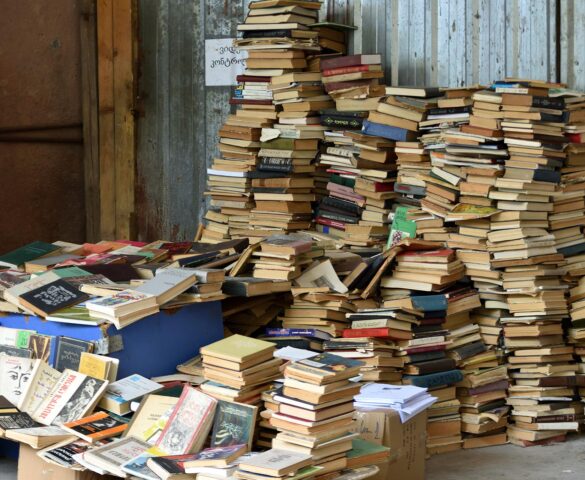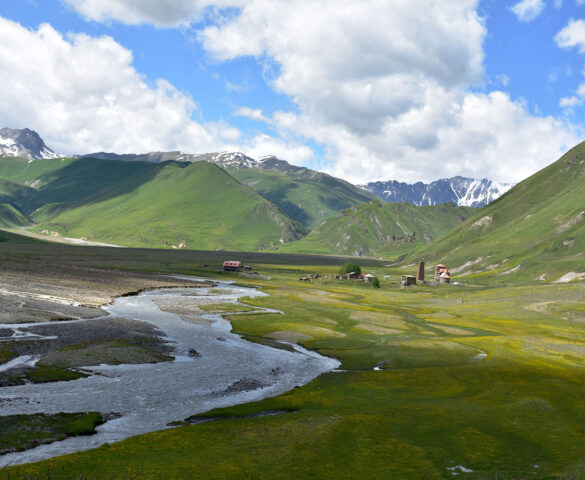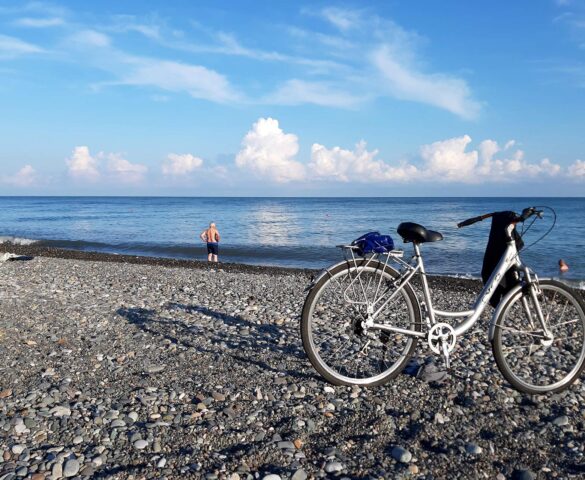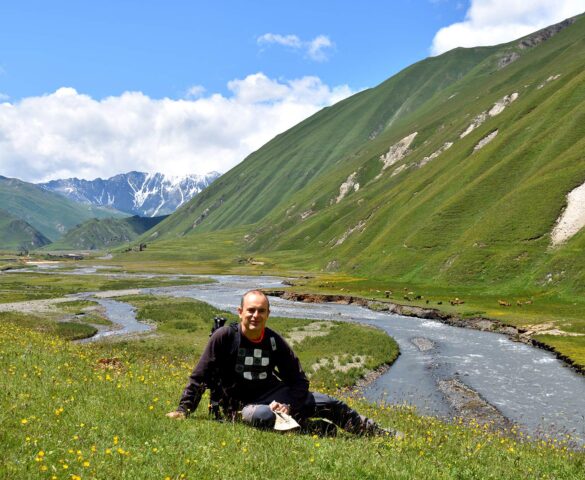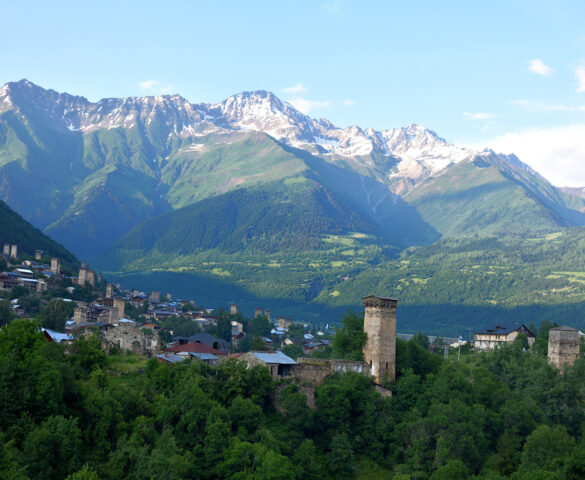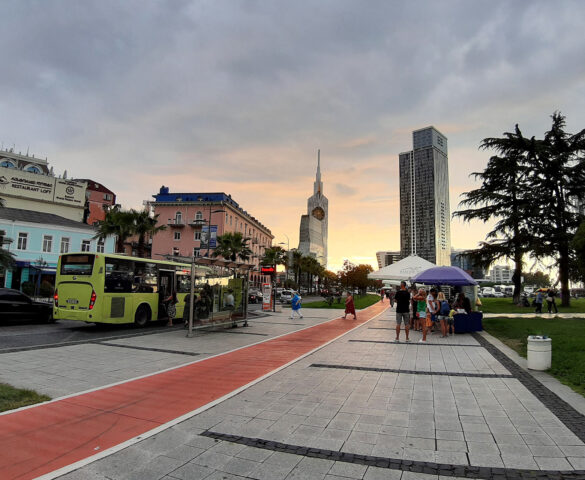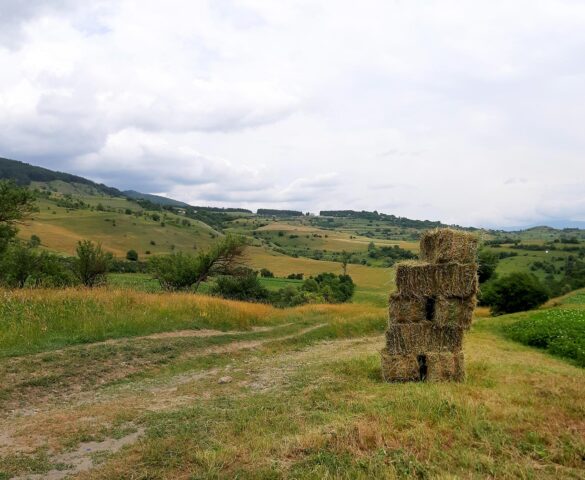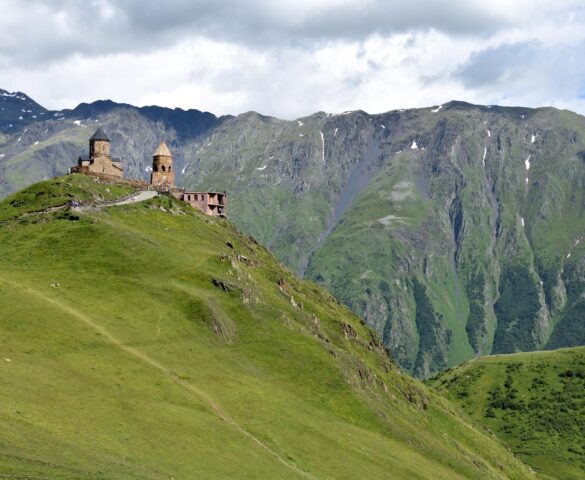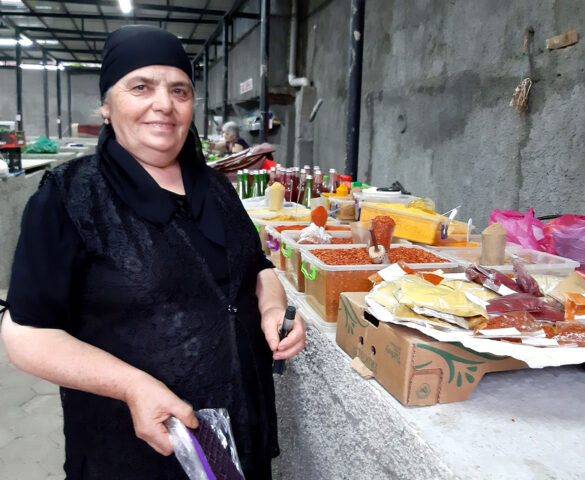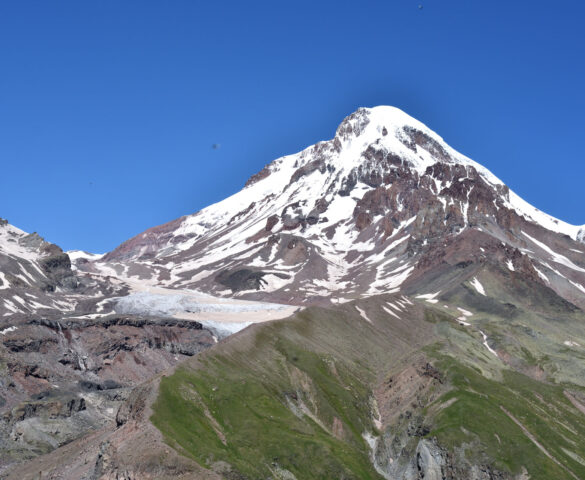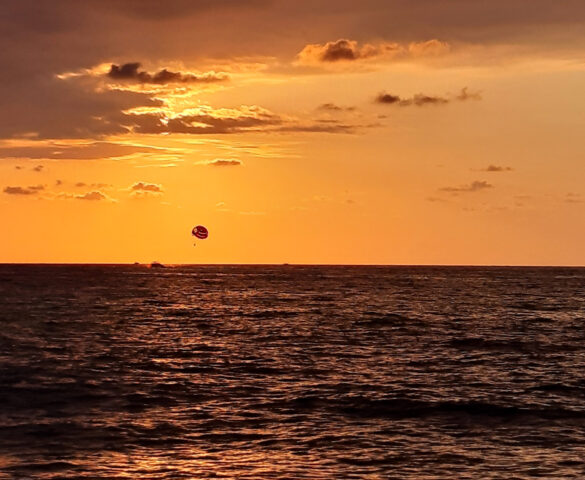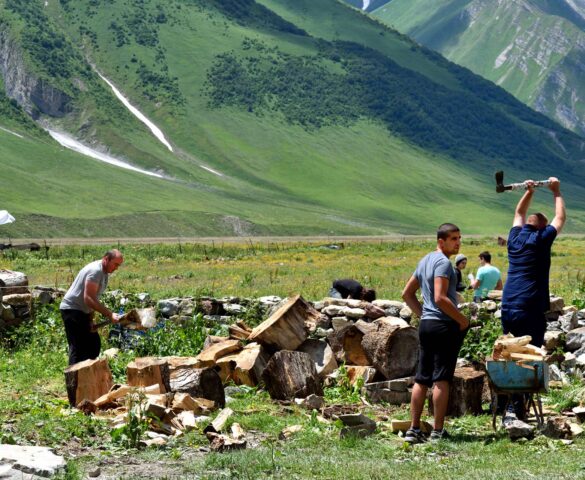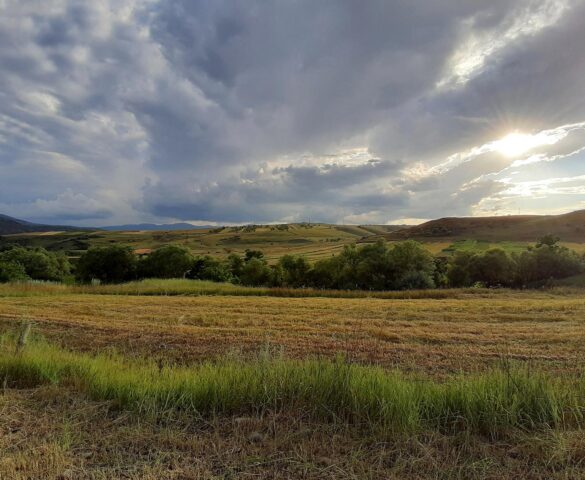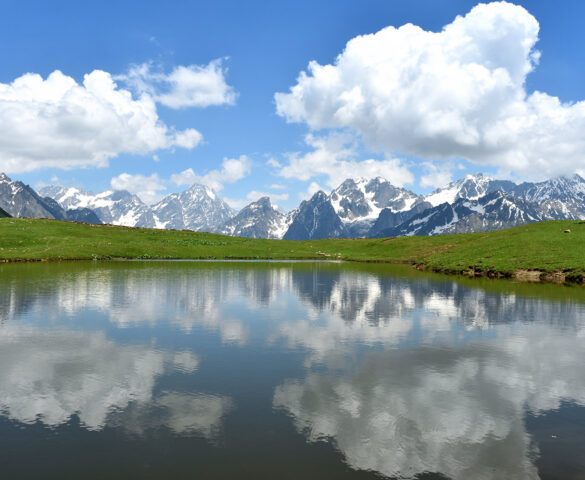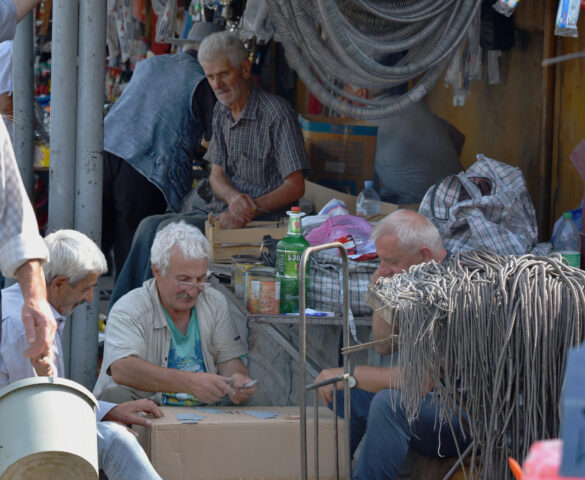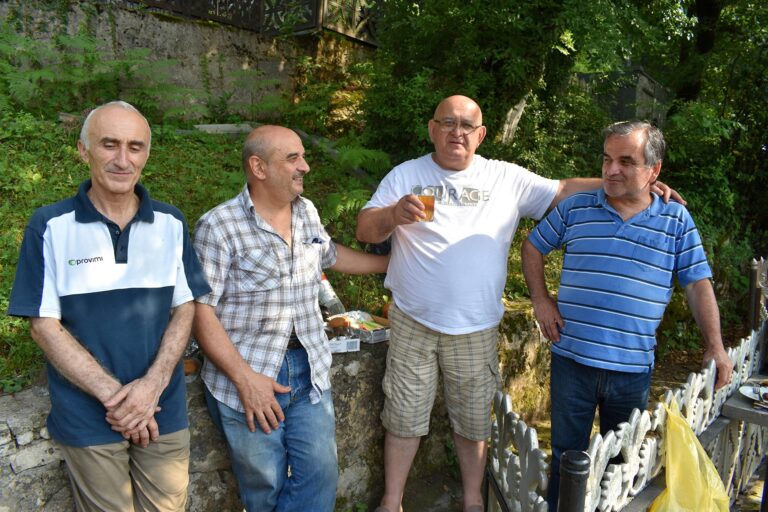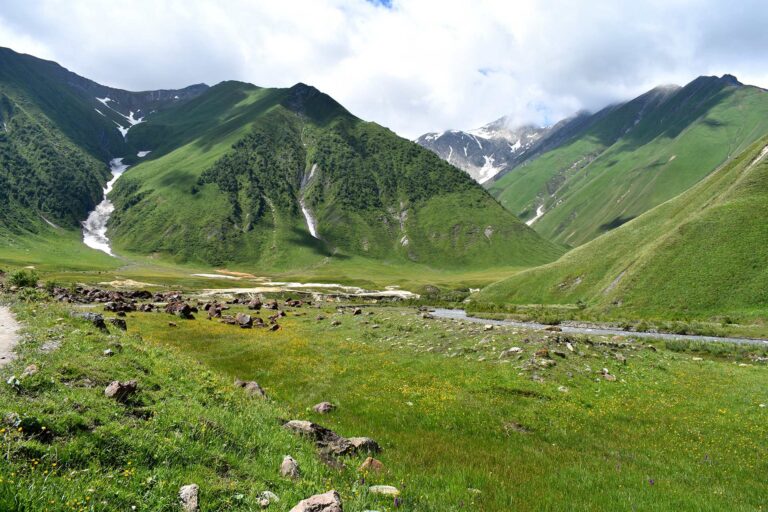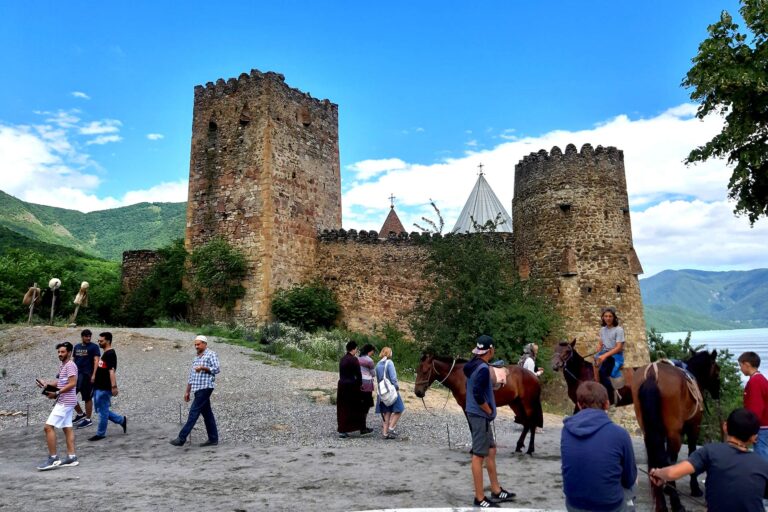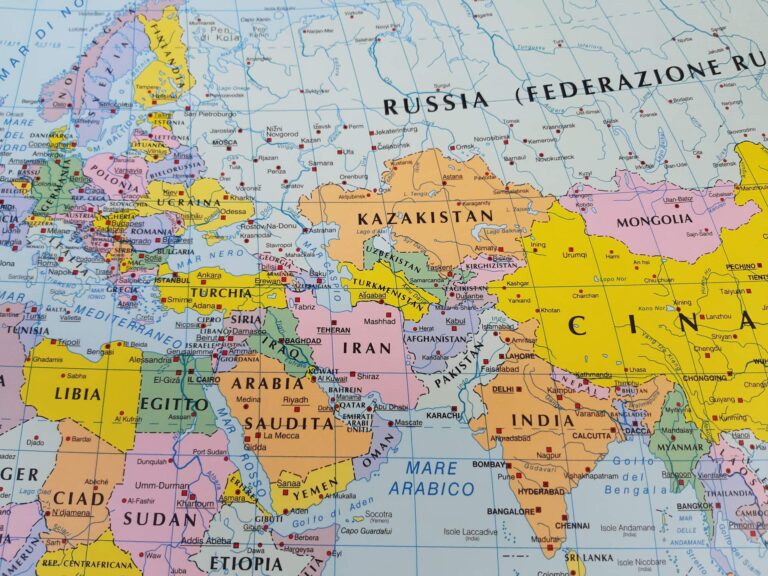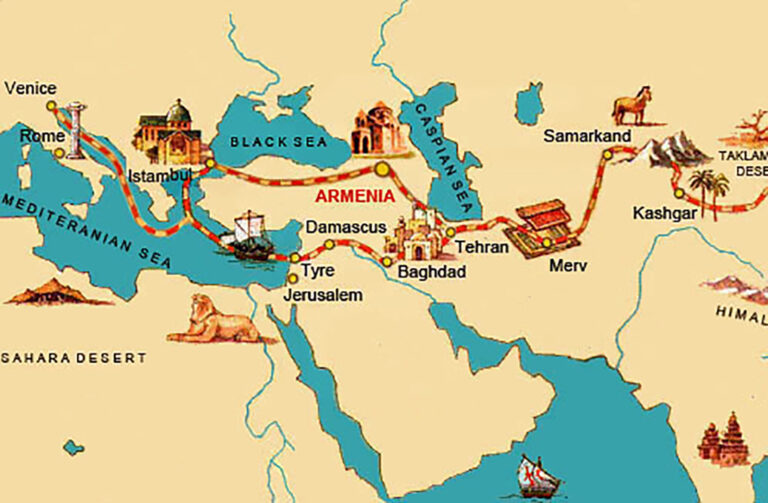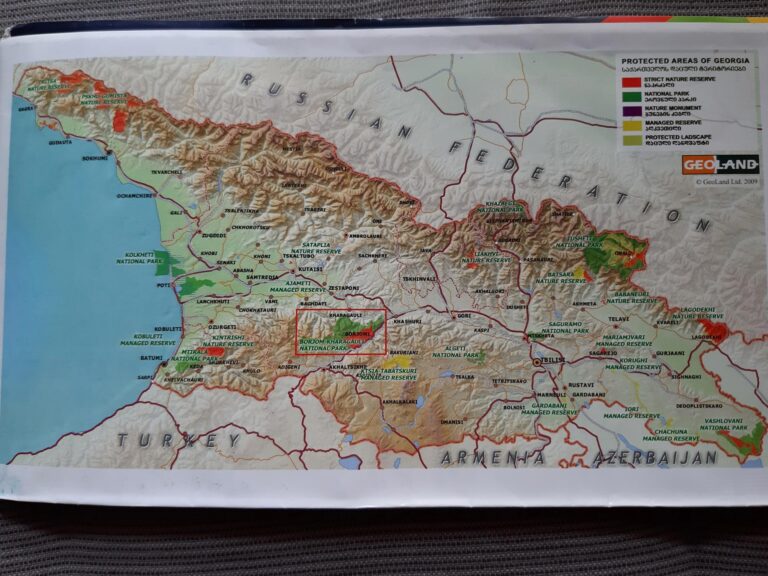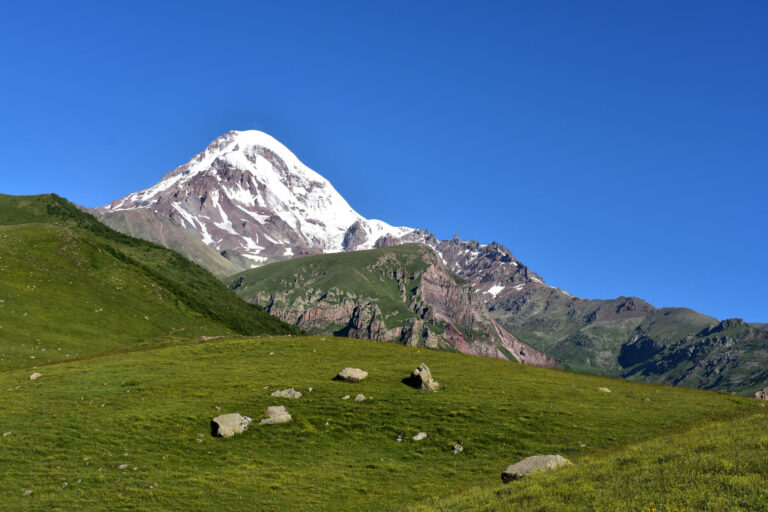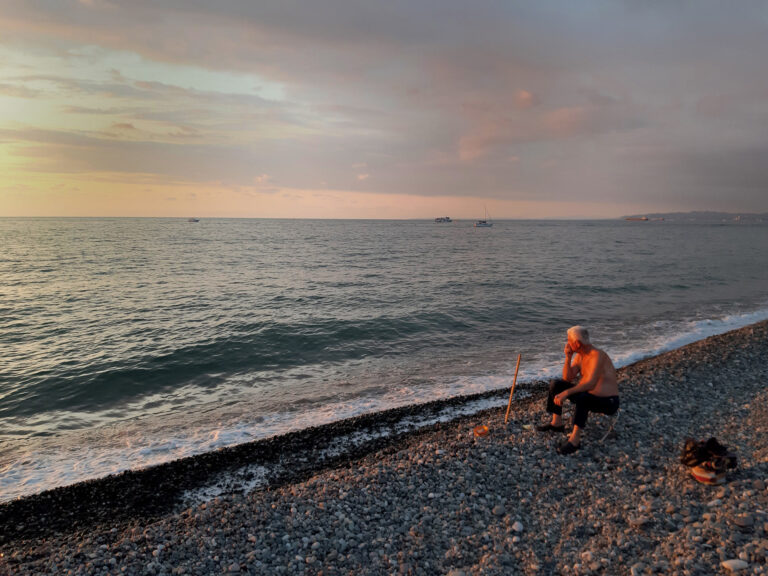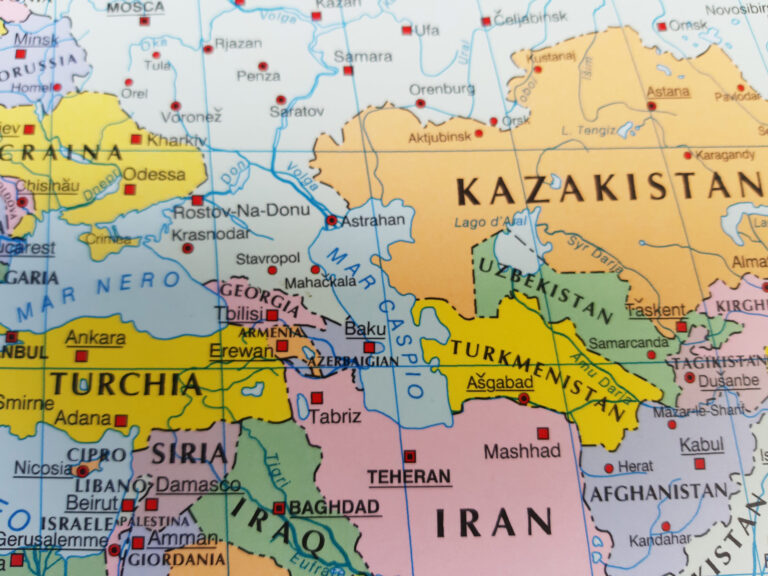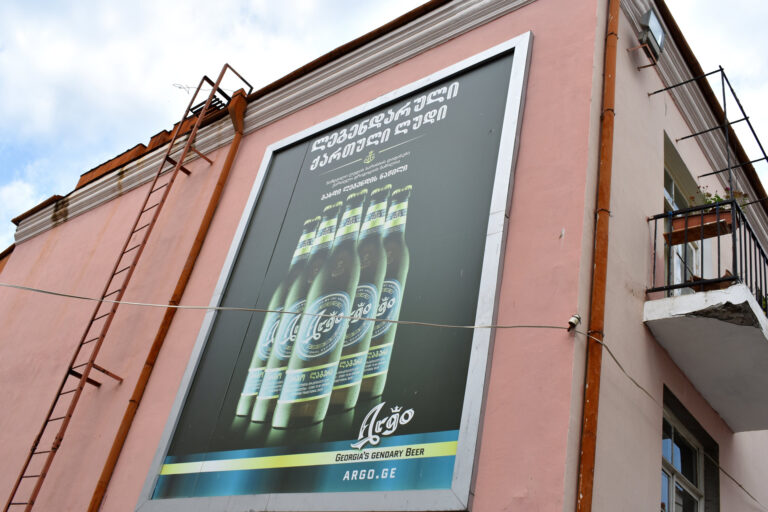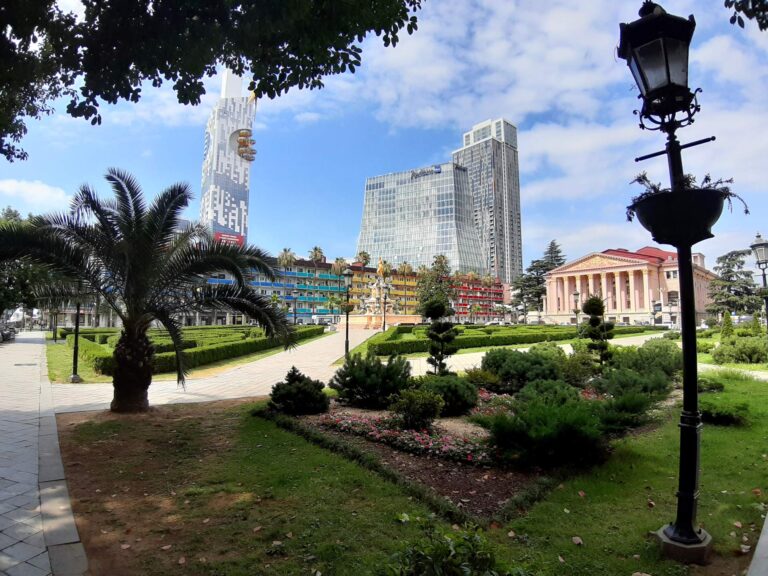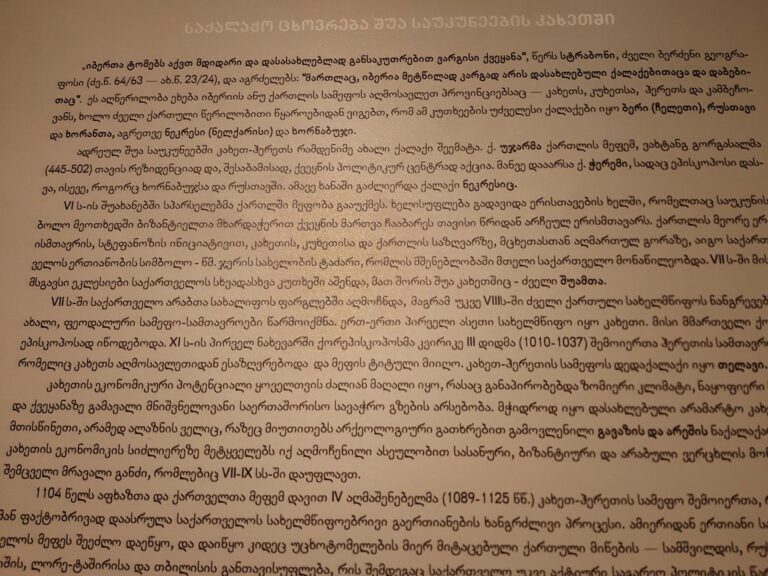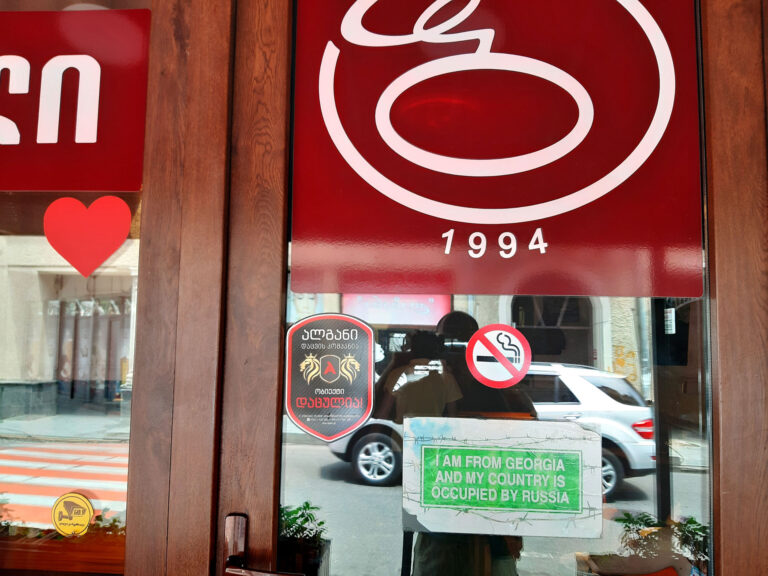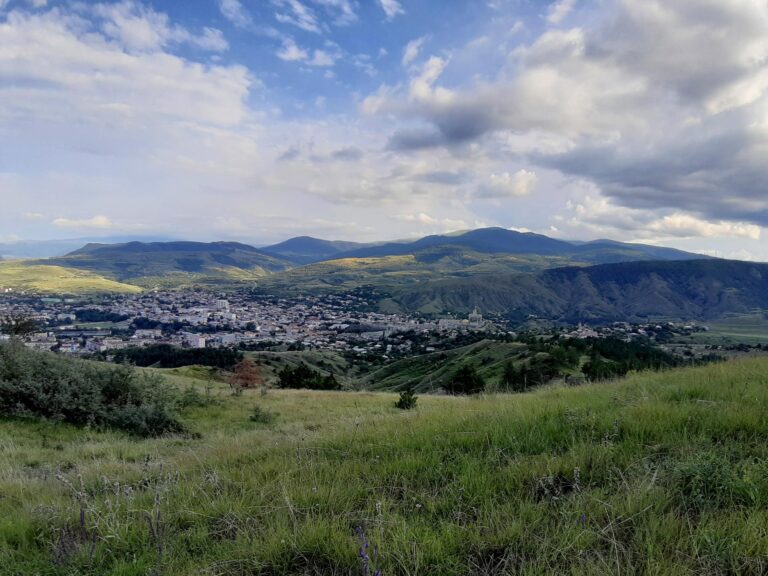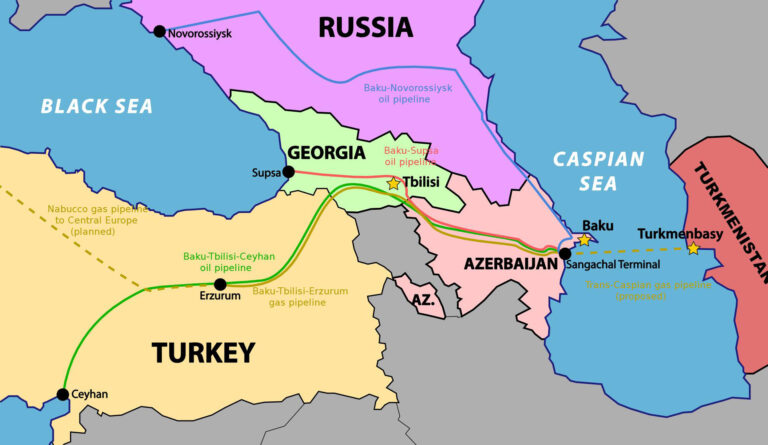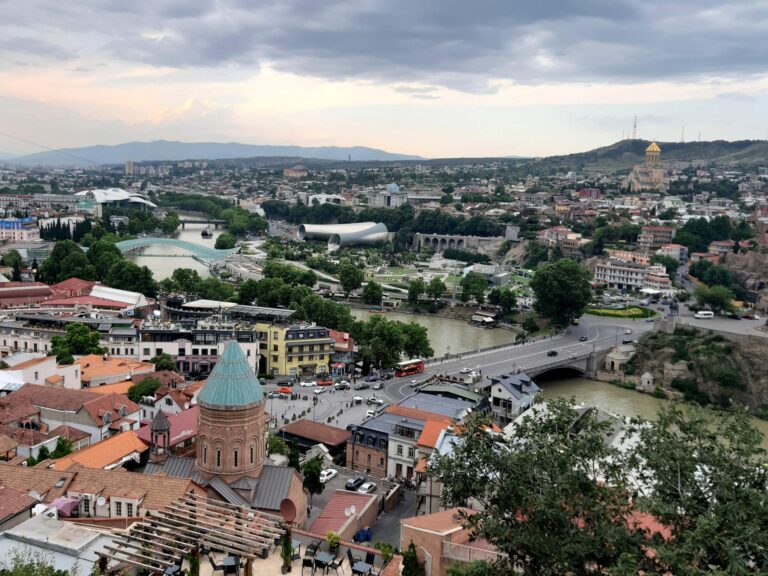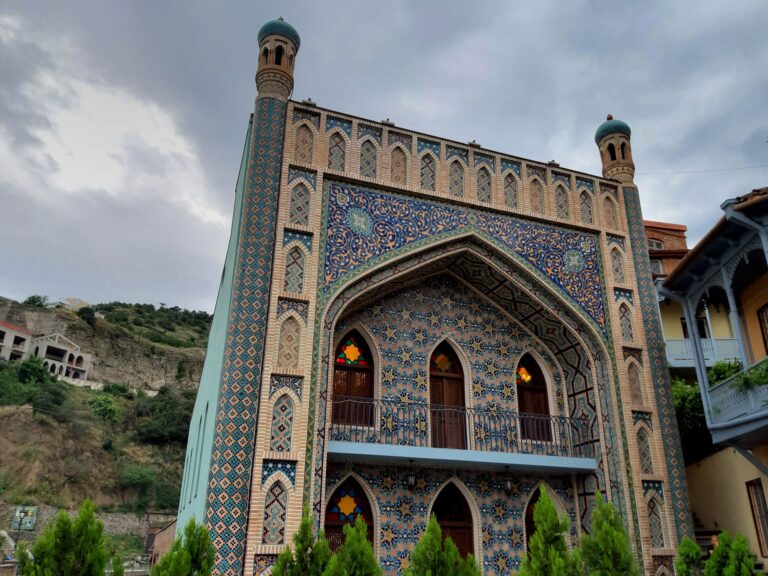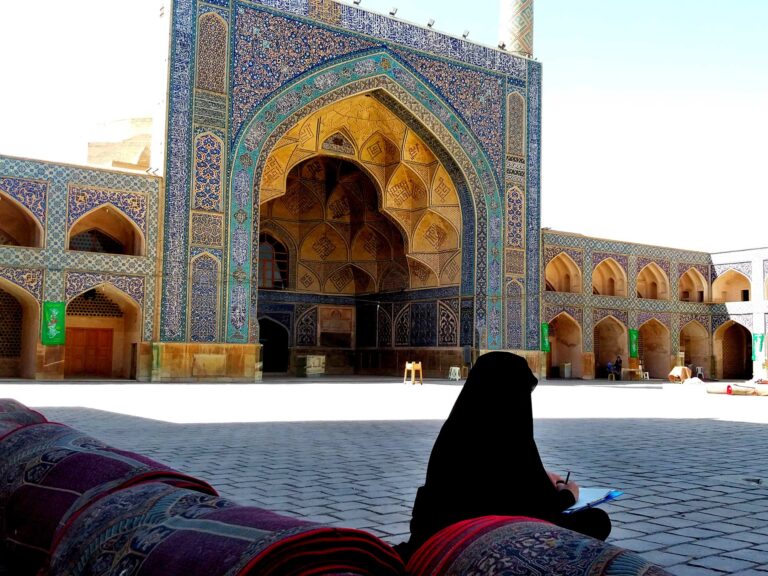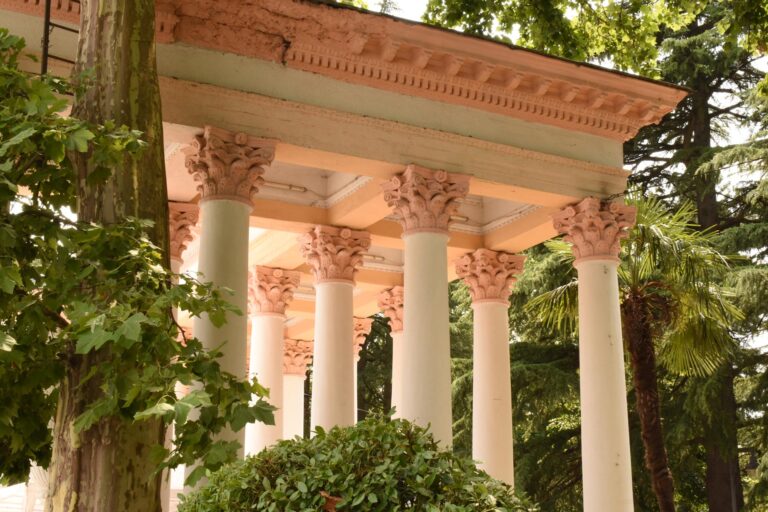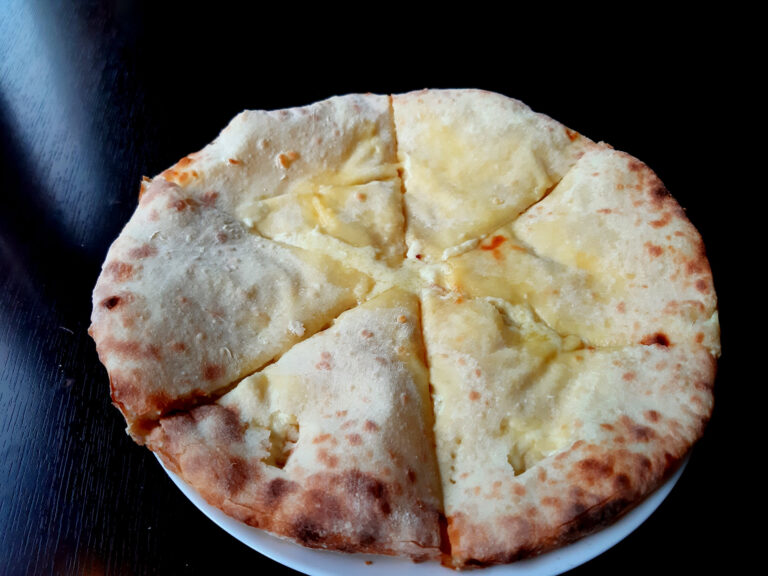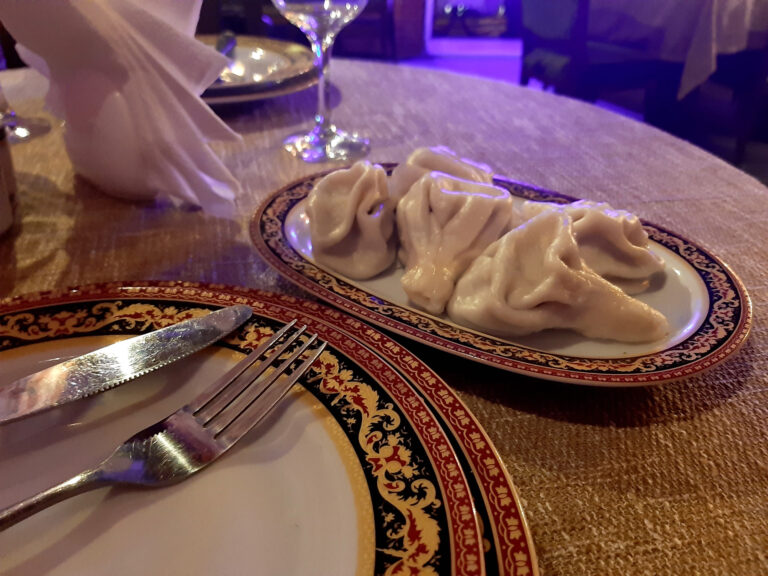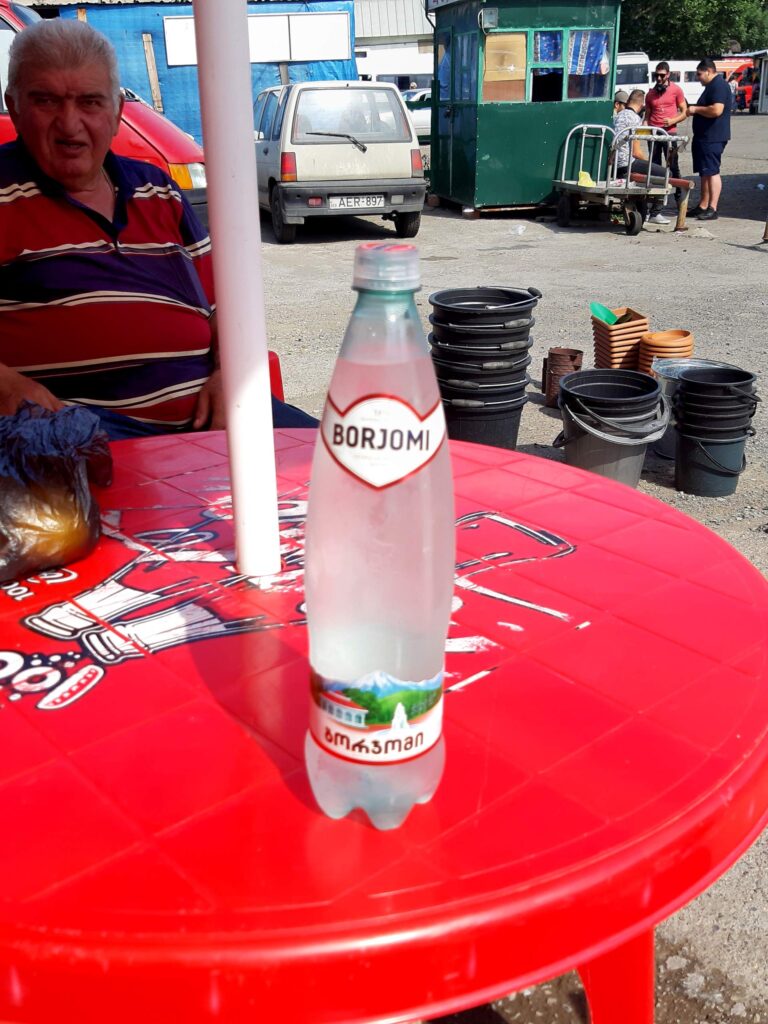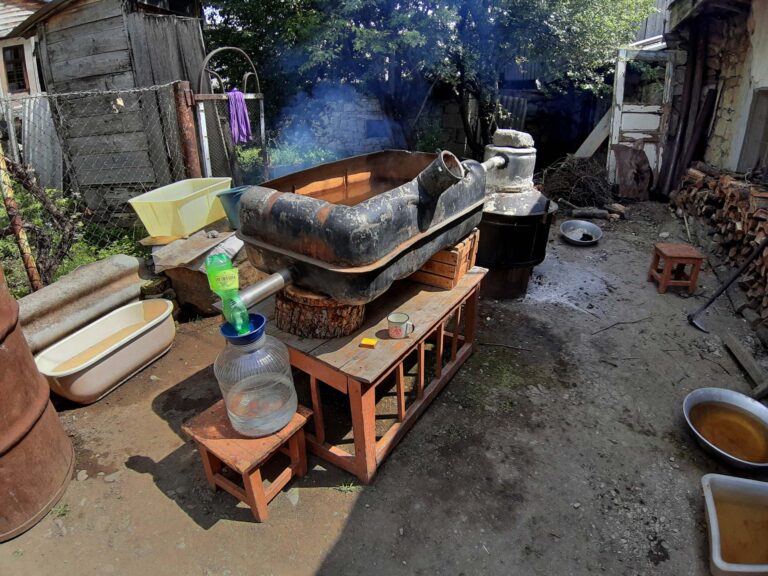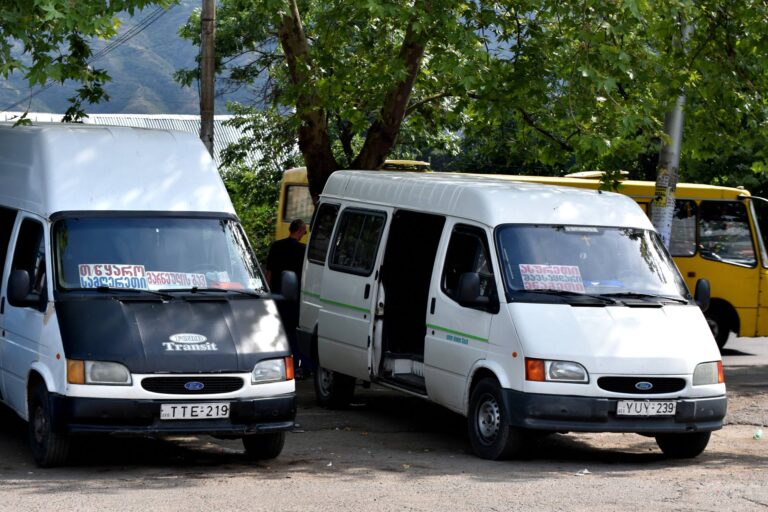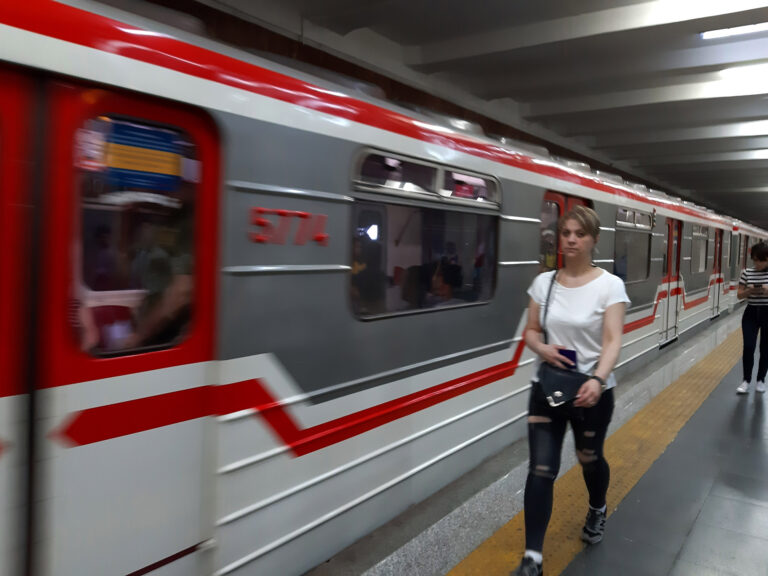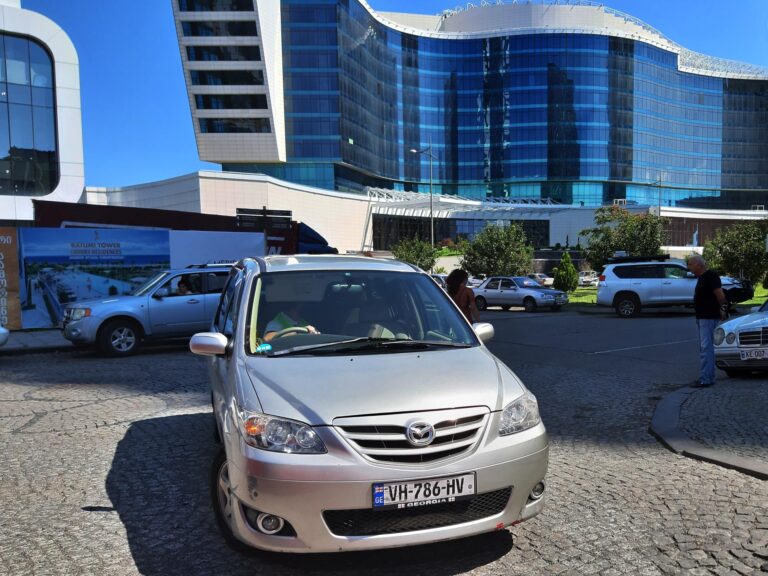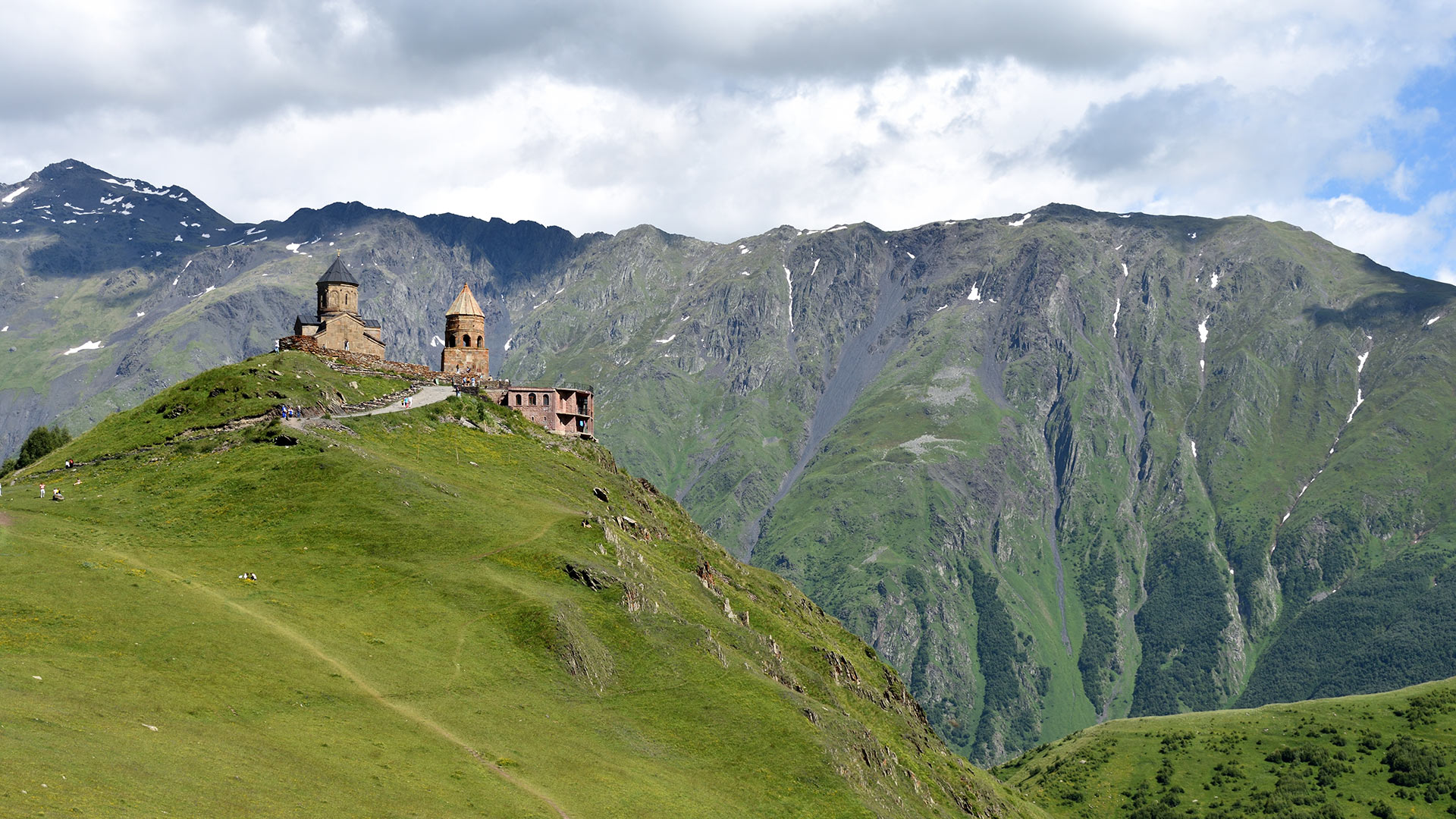
Fragments of worlds
My Fragment of Georgia
Georgia: Fragment of Caucasus
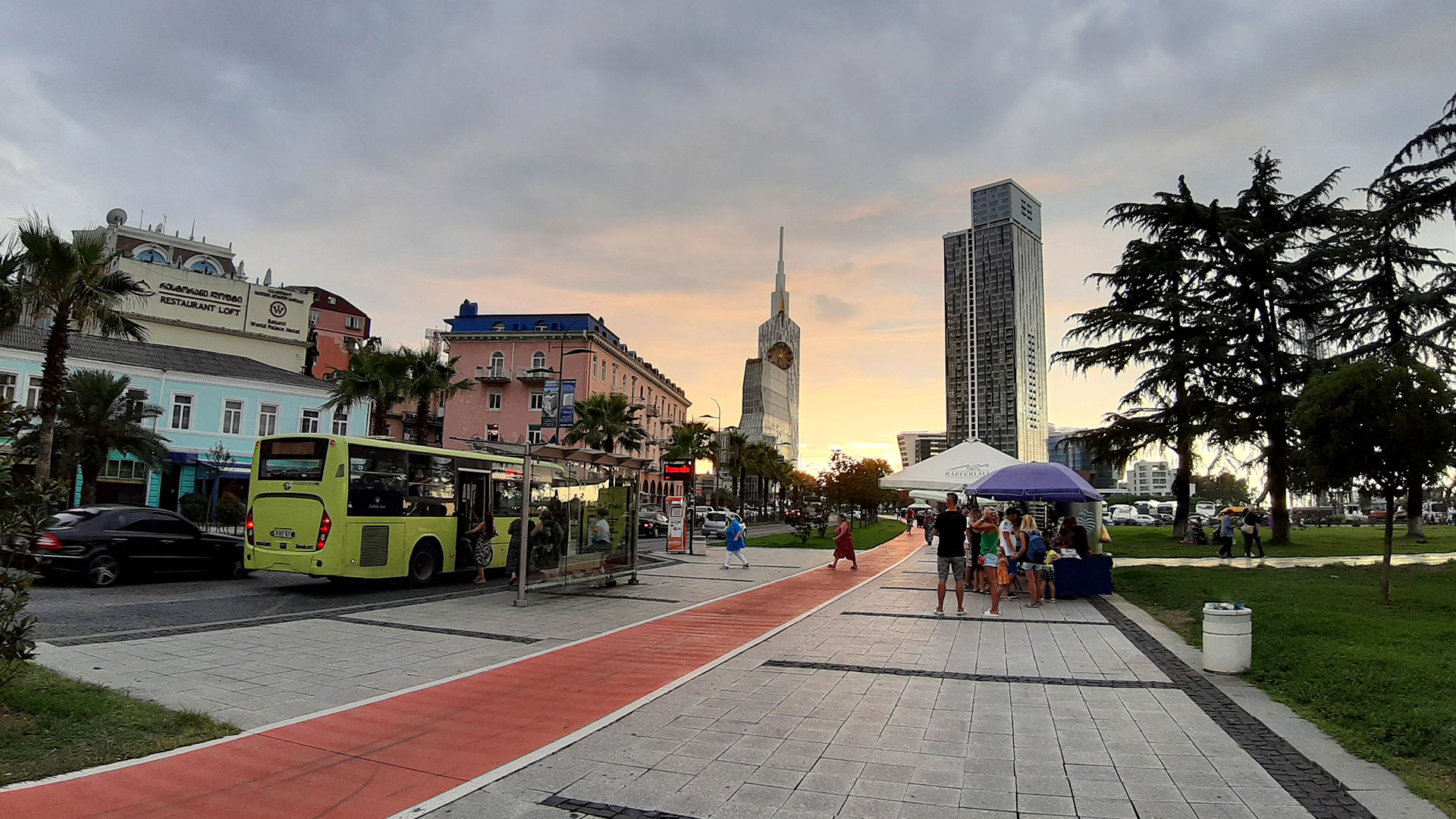
Fragments of worlds
My Fragment of Georgia
Georgia: Fragment of Caucasus
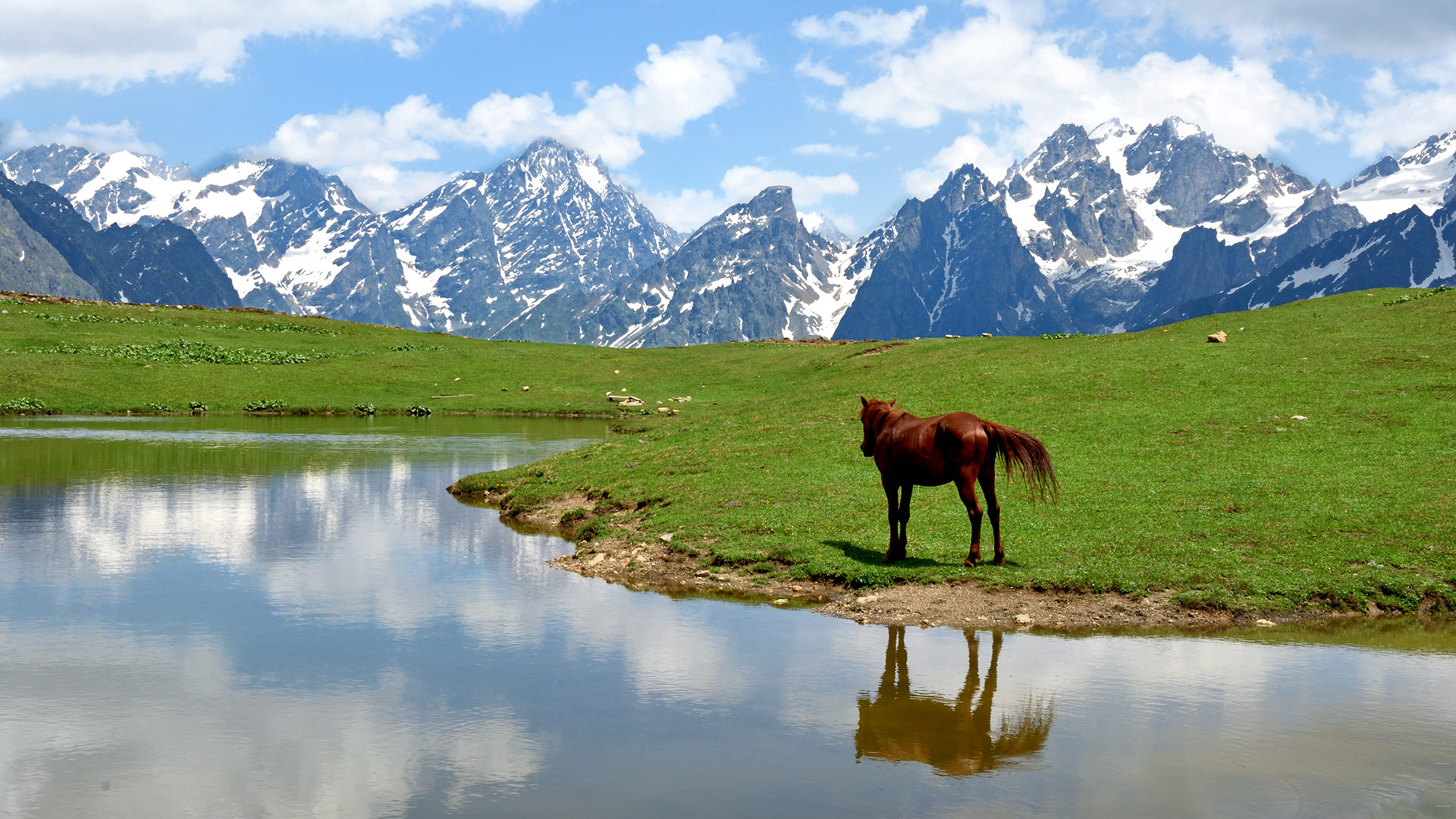
Fragments of worlds
My Fragment of Georgia
Georgia: Fragment of Caucasus
Georgia: Fragment of Caucasus
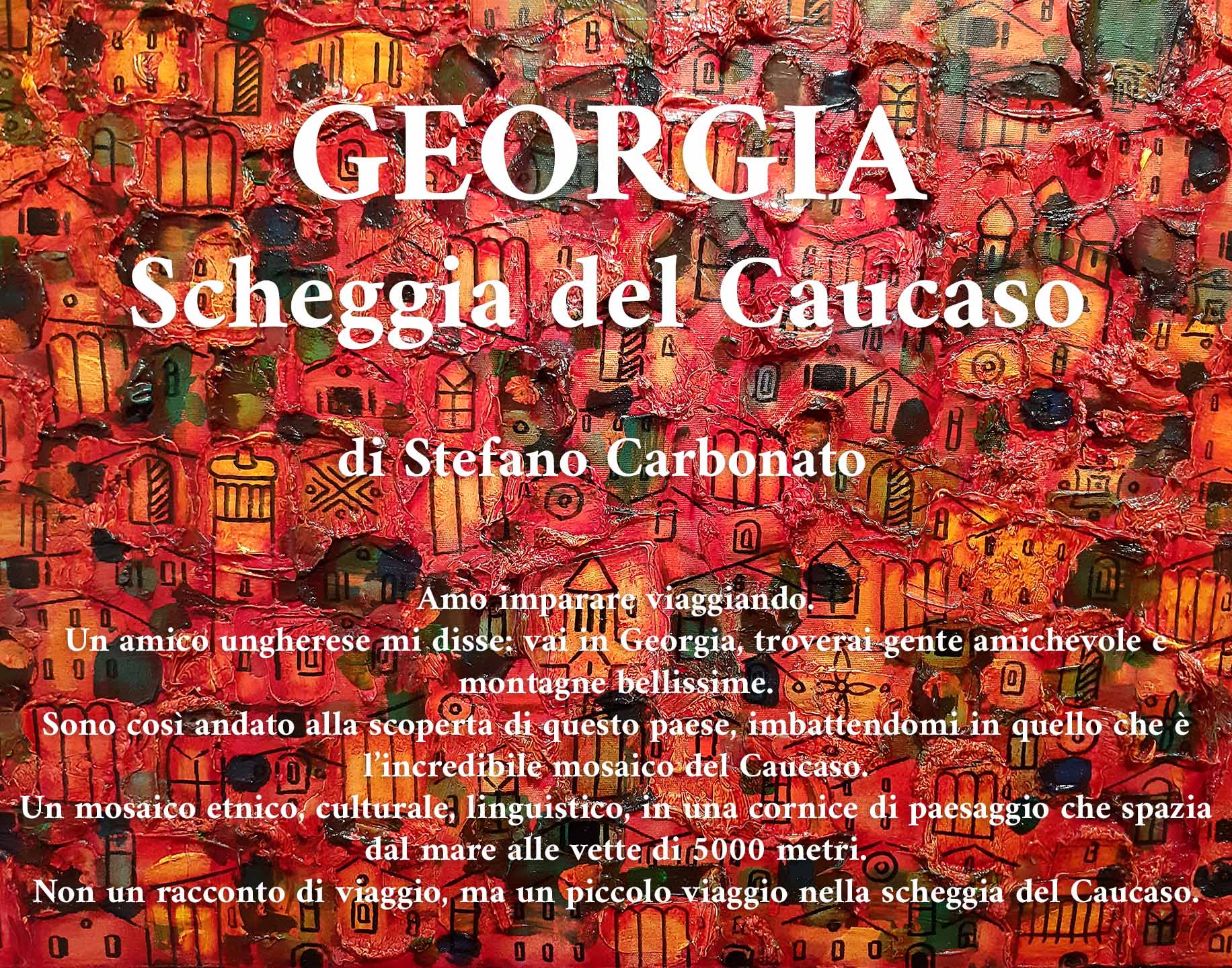
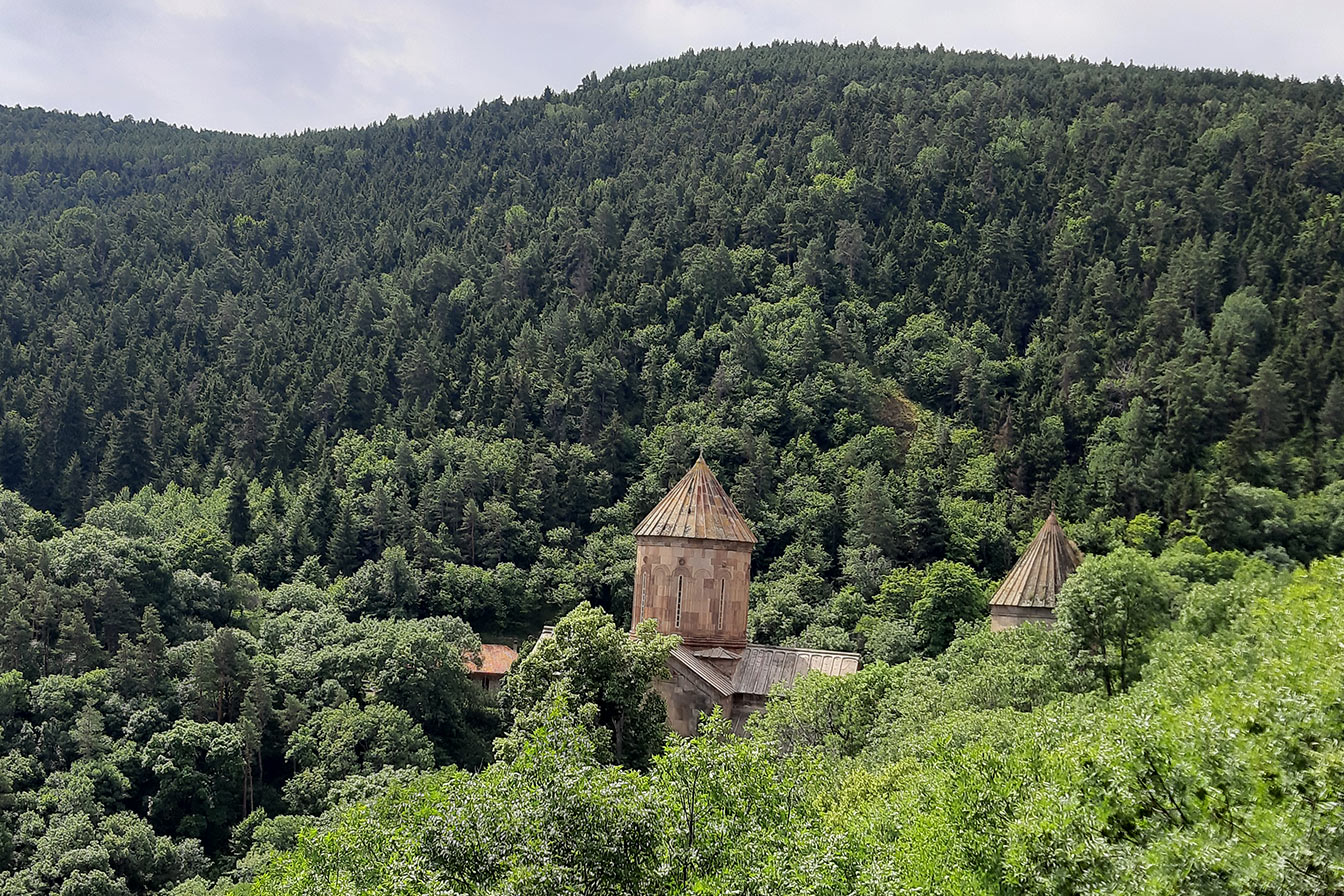
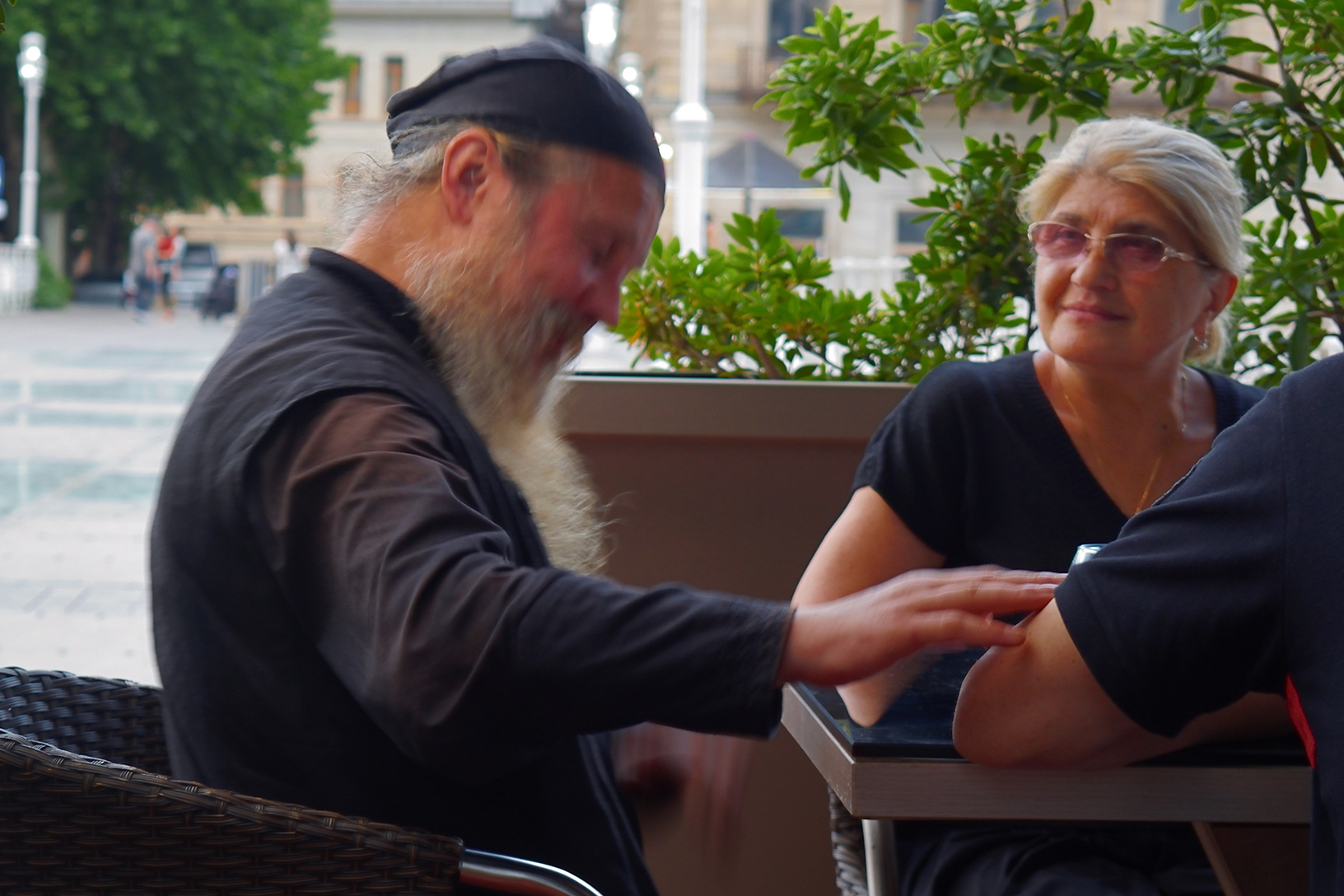
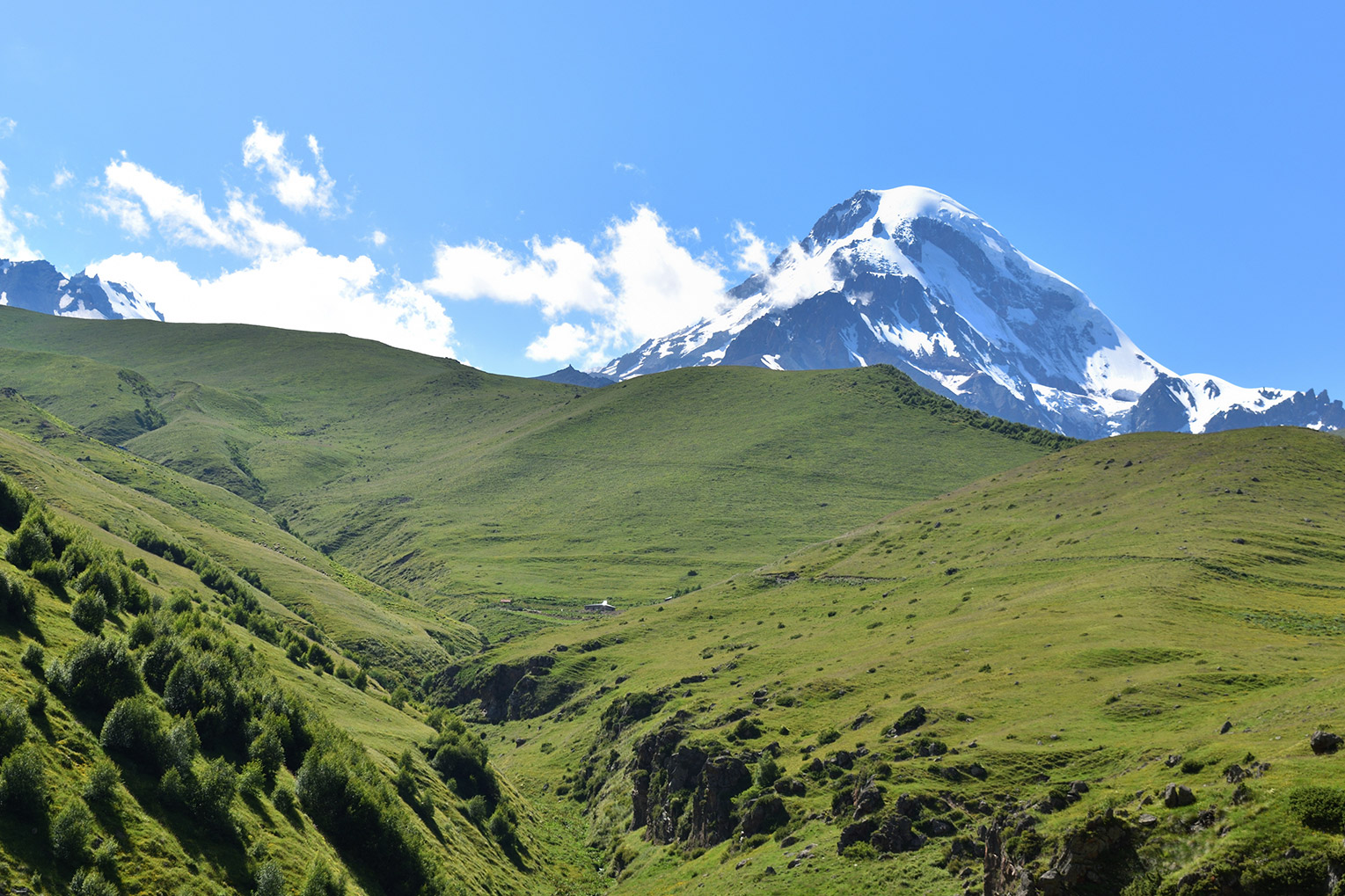
A subjective and not exhaustive overview, as result of my personal travel experience.
To increase knowledge of Georgia before traveling to this country or simply for spirit of knowledge.
Introduction
Some time ago in Iran a Hungarian guy told me: go to Georgia, you will find friendly people like in Iran and in addition beautiful mountains. And it was in that moment that I began to think of a trip to Georgia, precisely to find confirmation of these statements.
In the summer of 2019 I carried out this project and I will give you my answer right away, based on my travel experience: as regards being friendly with travelers like Iranians (and Iranians are really very friendly and hospitable) I say yes they are, if you go to the not touristic area. However, I must say that I do not speak Russian and they do not speak English, so for me the obstacle of the language was often insurmountable for a communication that goes beyond gestures.
I took this photo in one of the beautiful moments of socializing with the Georgians.
I was in a graveyard and while I was looking at the gravestones, these men saw and called me. They were commemorating a friend of theirs who died by being together, eating, drinking and partying in front of his grave. They told me about their friend and offered me food and drink.
As for the beauty of the place, I say absolutely yes: Giorgia is beautiful, with an incredible variability of landscape: crossing such a small country, you can go from the beaches of the Black Sea to 5000 m of the Greater Caucasus.
But there’s more: little Georgia is a piece of the Caucasus mosaic: an ethnic, religious, linguistic and cultural mosaic in an area always considered strategic from a geopolitical point of view. A door toward the East or, on the other hand, a door toward the West, with a culture that is influenced by both these poles.
A myth to dispel is that Georgia is an out-of-the-way country, off the touristic routes; actually it is not very popular with Western tourists, but it is especially with Russian tourists but not only.
The main mountain and seaside resorts and the capital Tbilisi are crowded with tourists, so I had some trouble to find the “real Georgia”.
This map outlines the topics of my “Fragment of Caucasus”
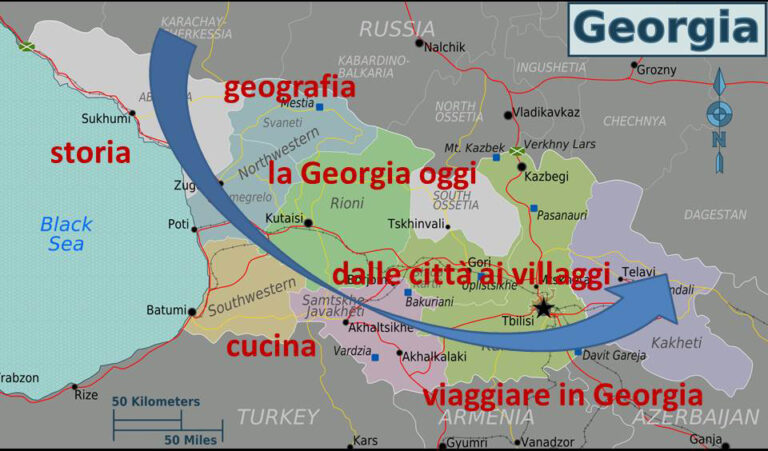 The topics of my “Fragment of Georgia”
The topics of my “Fragment of Georgia”
As you can see, it is not a travel story but a little trip to Georgia which touch on different topics ranging from history to geography, current events and more.
This is my view of the country, as result of my personal travel experience; a view, therefore, subjective, even if integrated with my researchs.
Geography
To understand Georgia and its history it is necessary to start from the geography of this country and its place in the geopolitical context.
That is, here, in the Caucasus, that strip of land in Eurasia between the Black and Caspian seas
Due to its particular position Georgia and more generally the Caucasus has always been a borderlandGeorgi: between East and West, between Christianity and Islam and between green areas and desert areas.
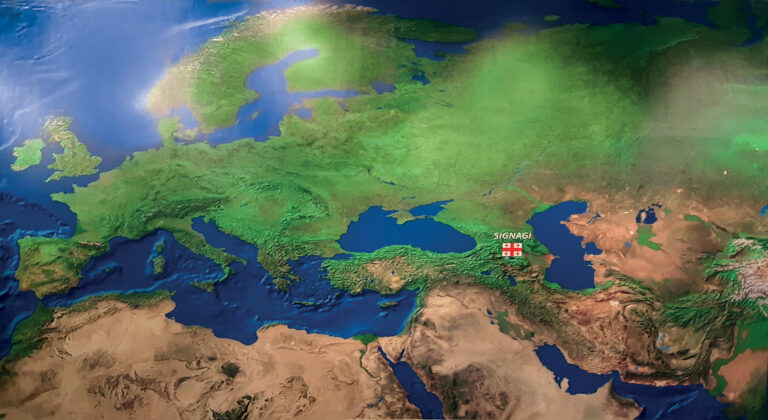 Georgia, borderland – map exhibited in the Sighnagi museum
Georgia, borderland – map exhibited in the Sighnagi museum
and it has always been a place of transit: it is located for example on the ancient silk road.
From a physical point of view, the area is characterized by the presence of the Caucasus mountain range, an offshoot of the great Asian mountain ranges.
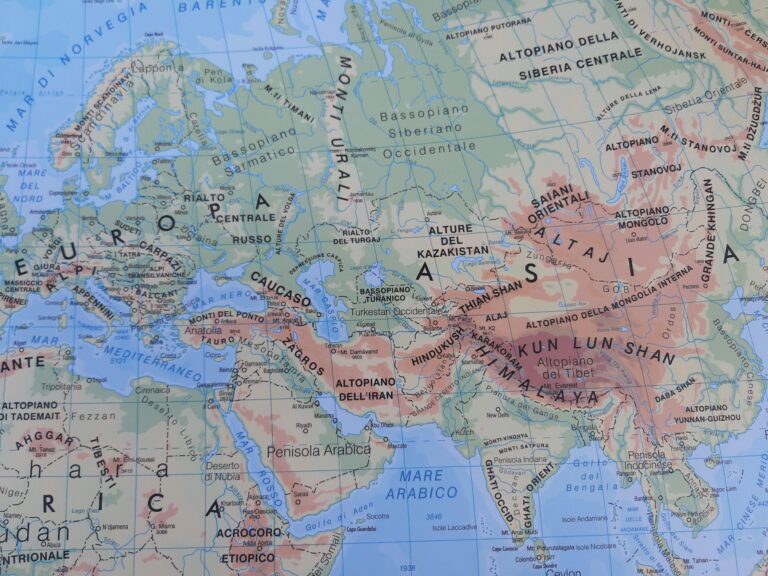 The great Asian mountain ranges
The great Asian mountain ranges
More in detail, the Caucasian range is divided into the Greater Caucasus which crosses the north of Georgia and the Lesser Caucasus which crosses the south of the country.
The peaks of the Greater Caucasus are the highest, some exceed 5,000 m and delimit the border with the Russian Federation.
This is Mount Kazbek, which with its 5047 m is one of the highest peaks in Georgia.
To the west, Georgia is bounded by the Black Sea.
Despite the name, the black sea can be very blue as you can see
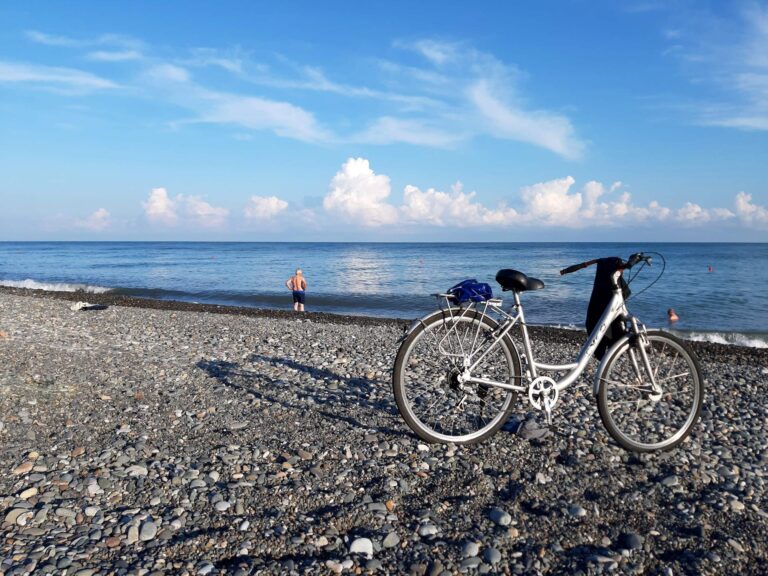 Blue Black Sea in front of Batumi beach
Blue Black Sea in front of Batumi beach
By swimming, I realized that the water is not very salty. It is almost as sweet as a lake. By researching, I discovered that indeed Black Sea is characterized by the presence of two layers of water, a sweeter surface layer and a deeper, salty one.
From a political point of view, the area north of the Greater Caucasus (Ciscaucasia) belongs to Russian Federation; while the southern area (Transcaucasia) is divided among Georgia, Armenia and Azerbaijan.
This at least at the official level, where official means what most governments recognize. Things are actually more complicated as we will see later.
History
The first “heavy” inhabitants to populate this land were those who left these footprints.
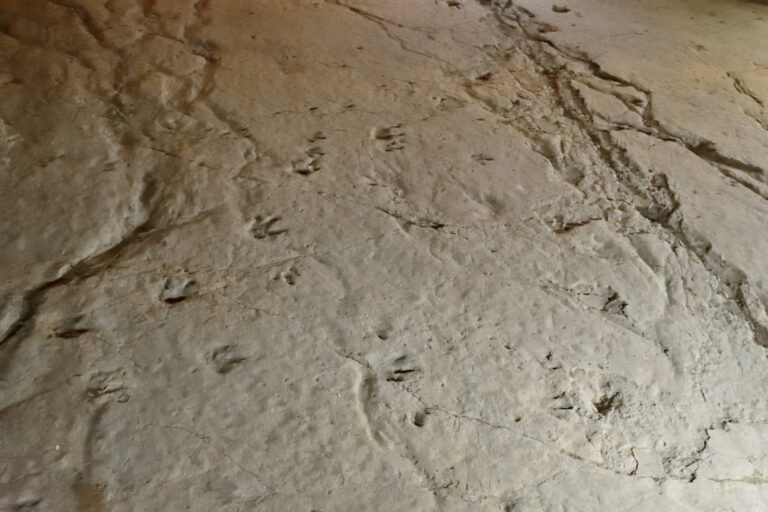 Dinosaur footprints – Sataplia Nature Reserve
Dinosaur footprints – Sataplia Nature Reserve
I’m talking about the dinosaurs that 70 million years ago populated the area that today has become the natural reserve of Sataplia (close to Kutaisi).
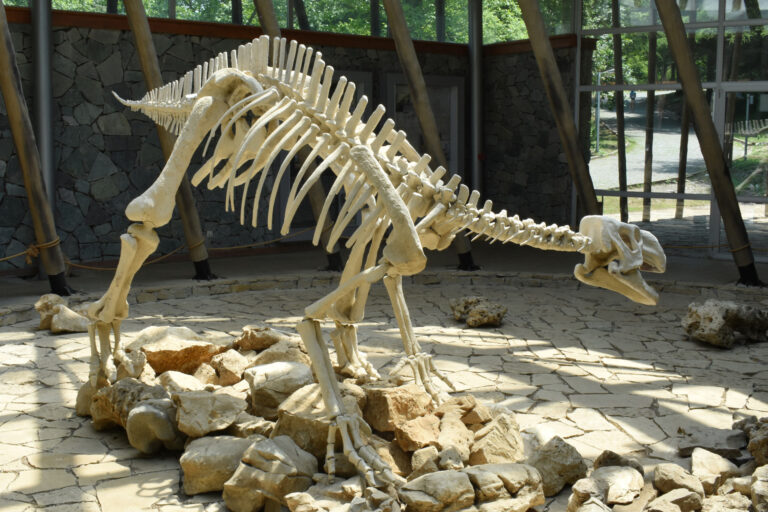 Reproduction of a dinosaur – Sataplia Nature Reserve
Reproduction of a dinosaur – Sataplia Nature Reserve
Long after the extinction of the dinosaurs, the first traces of human presence were found near Tbilisi and date back to 1.8 million years ago; these traces are the oldest after those found in Africa, testifying to the very ancient history of the Caucasus.
In classical times, about 500 years before Christ, the current Georgia was mainly divided into two kingdoms: the Colchis to the west and Iberia to the east.
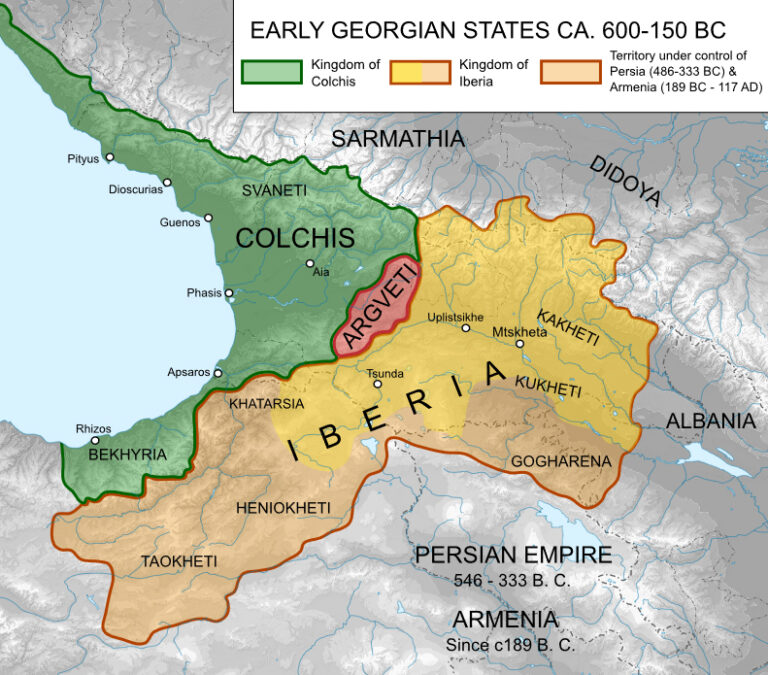 The ancient kingdoms of Colchis and Iberia
The ancient kingdoms of Colchis and Iberia
Greek colonies settled in the Colchis. I insist on this point because some Greek myths take place right there.
In Colchis Zeus imprisoned Prometheus guilty of having stolen fire from the gods to give it to men.
And again in the Colchis takes place the myth of Jason who, with the help of the Argonauts, seized the golden fleece which is a sheepskin.
The golden fleece myth originates from a tradition of Svaneti region where people used to look for gold by spreading sheepskins among the rocks on which particles of gold transported by water were deposited.
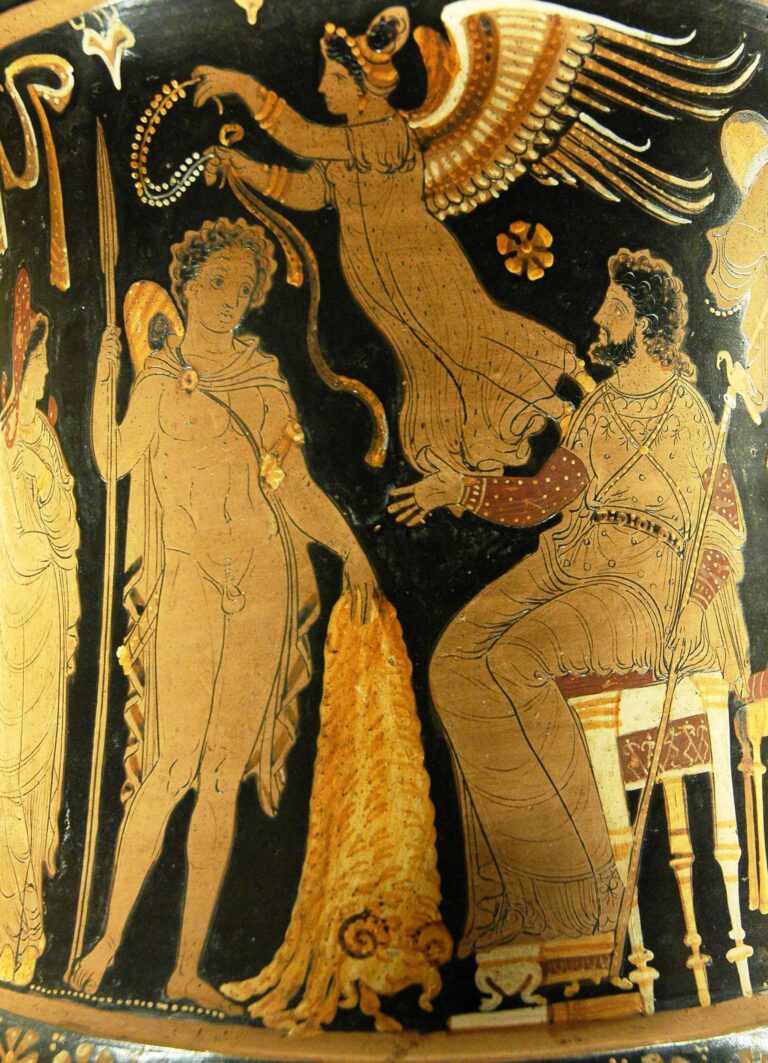 Jason and the golden fleece – Louvre
Jason and the golden fleece – Louvre
Jason sailed on the current river Rioni with the ship Argo and reached Kutaisi where he was received by the king of the Colchis.
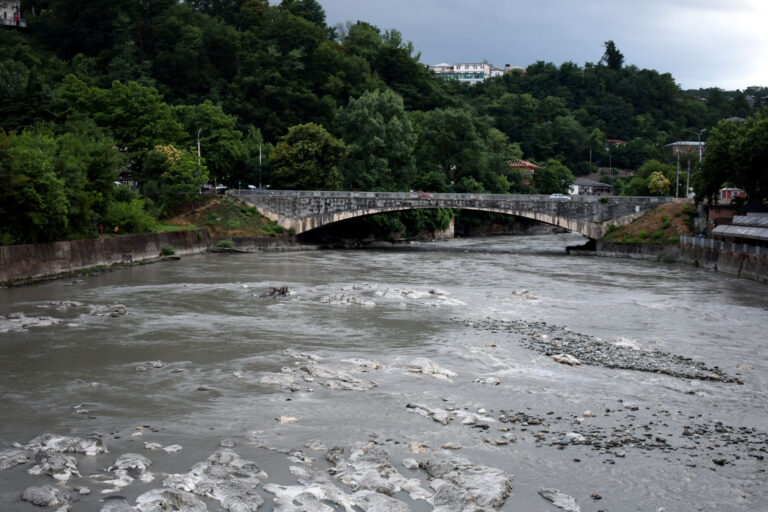 In the footsteps of Jason: the Rioni river in Kutaisi
In the footsteps of Jason: the Rioni river in Kutaisi
Today the Jason and Argonauts myth, needless to say, inspired the name of the national beer Argo!
Moving forward in history, Georgia embraced Christianity around AD 300.
Instead The first time that a territorial unit of Georgia was created was in medieval times (between 1000 and 1200). This was the heyday of Georgian history. On in this period monastery of Vardzia was built which today is one of the touristic attractions of Georgia.
It is a cave monastic complex excavated from the slopes of a mountain.
It is a cave monastic complex excavated from the slopes of a mountain where a church and houses were built that housed 2000 monks.
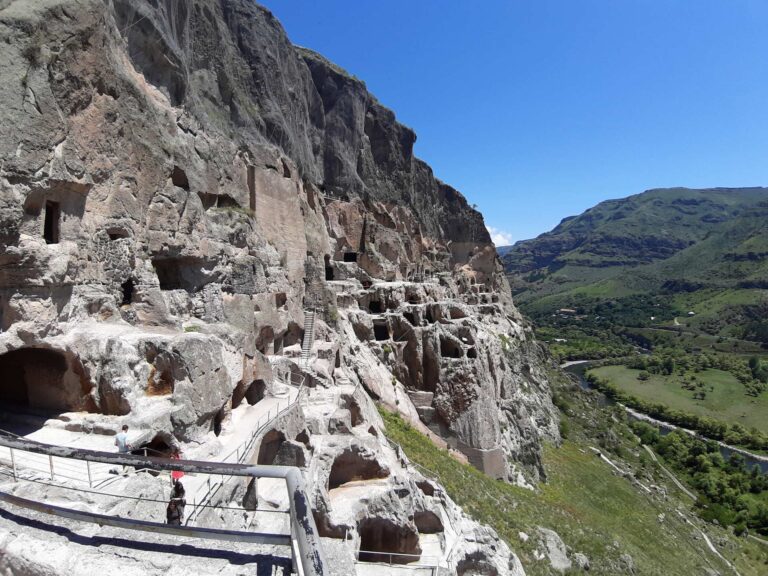 Vardzia monastery, a cave city
Vardzia monastery, a cave city
Vardzia became the bastion to resist Mongol invasions and represented the eastern border of Christianity. It is impressive to enter the tunnels, visit the houses and then come across the monastery.
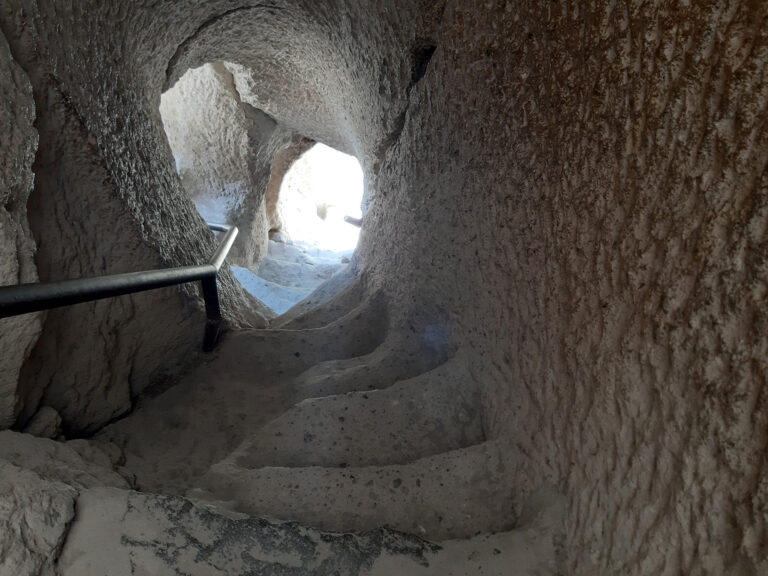 One of the several tunnels of Vardzia
One of the several tunnels of Vardzia
What is remembered by Georgians as the golden age ended suddendly in 1300 with the invasion of the Mongols. Vardzia was sacked two centuries later by the Persians.
From that point on, Georgia was split into weak kingdoms which fell under the control of the Turks and Persians.
The reunification of the Georgian territories took place at the end of the 1700s with the arrival of the Russians who were actually welcomed peacefully because they offered protection against Muslim enemies.
Immediately after the Russian Revolution, Georgia for a short time gained independence, but was soon invaded by the Red Army.
The Communists redesigned the political map of the Caucasus defining the borders of 3 states: Georgia, Armenia and Azerbaijan, all incorporated into the Soviet Union.
And it was Georgia that provided one of the protagonist of the time: Josif Stalin, born in Gori, an hour’s drive from Tbilisi.
Immediately after the fall of communism Georgia strongly tried to get the indipendence. In 1989 a demonstration for independence in front of parliament was crushed in blood by the Soviet army. 19 people were killed.
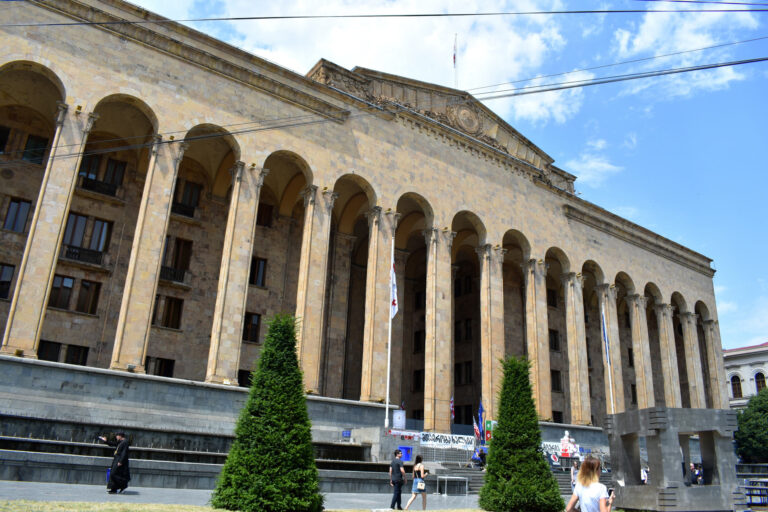 The Parliament building in Tbilisi
The Parliament building in Tbilisi
On the floor in front of the building, these glass tiles appear today, arranged irregularly in memory of those bodies left on the ground.
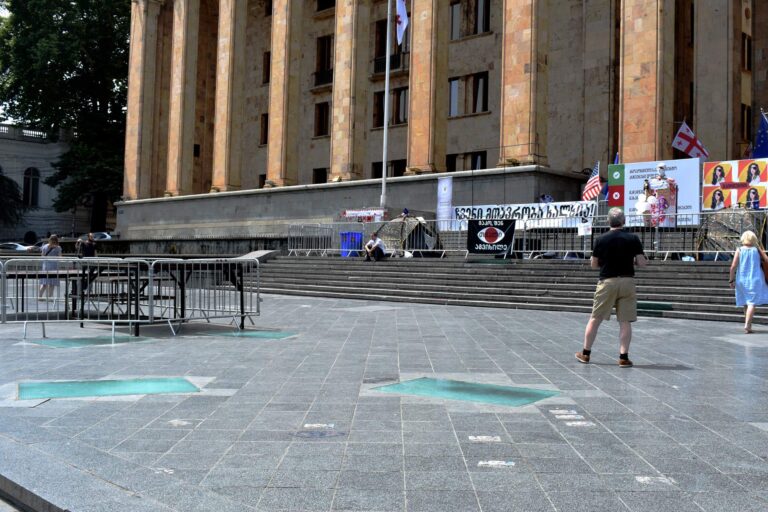 Glass tiles in memory of the victims
Glass tiles in memory of the victims
After that day Georgia proclaimed independence and chaos broke out in the country.
In order to restore peace, the Georgian Edward Shevarnadze, the soviet foreign minister of the Gorbachev era, was appointed president of Georgia.
In those years, on the one hand, Georgia was fighting for its independence, but on the other, impulses towards separatism from Georgia developed in two regions of Georgia: Abkatia and South Ossetia, which led to the bloody split of these two regions in the early 1990s.
Shevarnadze was unable to restore stability to the country where crime and corruption spread.
In 2003, the widespread discontent resulted in what went down in history as the “Rose Revolution”, led by the opposition leader, 36-year-old Saakashvili; demonstrators peacefully occupied parliament and Shevarnadze resigned.
After presidential elections Saakashvili came to power in 2004; he led the country with an anti-Russian and pro-Western policy
I can’t pass a political judgment on Saakashvili, but from what I have seen I can say that he was certainly a modernizer, at least from an urbanistic point of view: this is the bridge of peace that Saakashvili wanted to build in the heart of Tbilisi center.
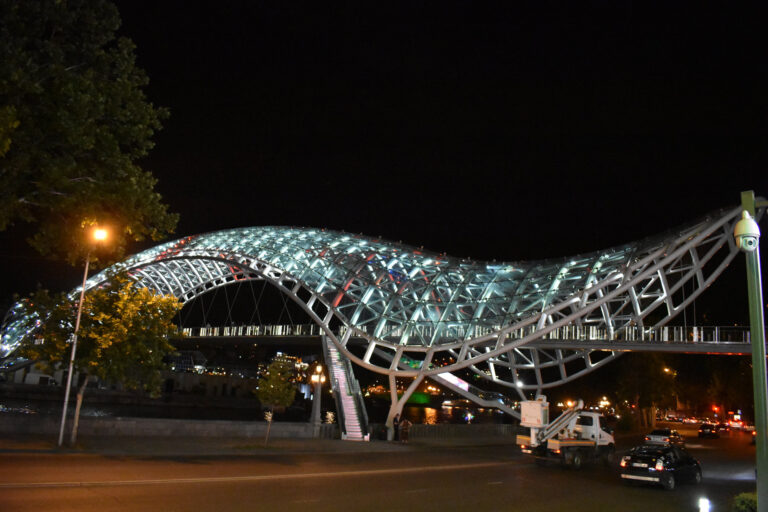 The bridge of peace in Tbilisi
The bridge of peace in Tbilisi
Designed by the Italian architect De Lucchi, it symbolizes the transition from ancient to modern and indeed connects the historic heart of Tbilisi with the modern district.
And this is Batumi, the seaside resort on the Black Sea that Saakashvili wanted to build relying again on the Italian architect.
The Saakashvili era ended in 2012 when after free elections came to power the Georgian billionaire Ivanishvili
Georgia today
A piece in the mosaic of the Caucasus
What is Georgia today? What has always been … a piece in the complicated mosaic of the Caucasus. And it is precisely the mosaic theme that inspired the title and the cover photo of my Fragment of Georgia which portrays a painting by Levian Mosiashvili, a contemporary Georgian painter..
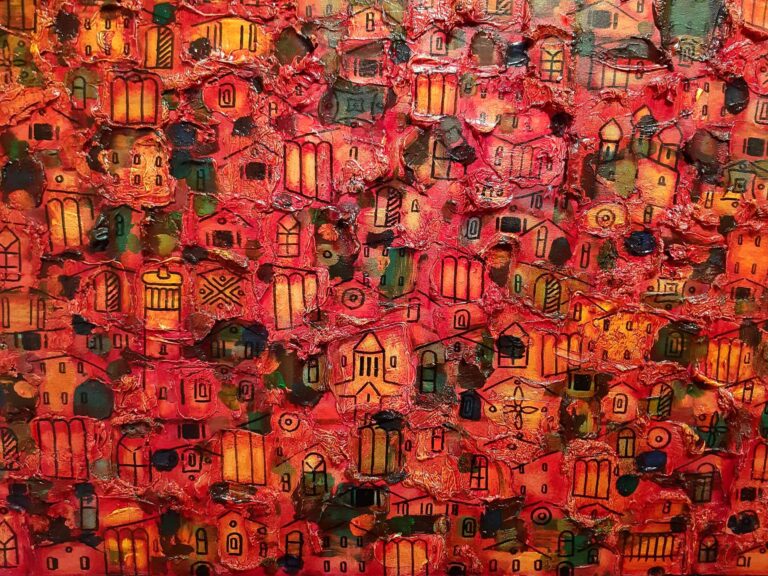 Levian Mosiashvili – Red night in spring town – Museo di Sighnagi
Levian Mosiashvili – Red night in spring town – Museo di Sighnagi
Levian Mosiashvili – Red night in spring town – Sighnagi museum
An ethnic, linguistic, religious and political mosaic. Let’s see it.
From the ethnic point of view, in the Southern Caucasus (Transcaucasia) of which Georgia is part, three main ethnic groups are mixed: Georgian, Armenian, Azerbaijani which make up 90% of the population of Transaucasia. To each of these ethnic groups, matches today a nation, namely Georgia, Armenia and Azerbaijan. At the same time, however, in Georgia cohabit Georgians, Armenians and Azeris.
And beyond these prevailing ethnic groups there are over 50 minority ethnic groups that give rise to a linguistic babel.
Indeed, the languages spoken in the Caucasus belong to 3 different groups: Indo-European such as Russian, Altaic (Turkish Mongolian languages) such as Azerbaijani and finally Caucasian such as Georgian.
The Caucasian language family has origin only on a geographical basis… that is, Caucasian languages are those such as Georgian, which are spoken only in the Caucasus even if they are not related to each other.
To give you an idea of this great variability, consider that in almost all of Europe and in part of Asia, an area therefore immense compared to the small Caucasus, only Indo-European languages are spoken
It is the same for the writing: for example this is the Georgian writing , of very ancient origin, which has nothing to do with the Cyrillic of the neighboring Russia.
From the religion the point of view , the area is divided between Orthodox Christians (Russians, Georgians), Armenian Christians and Muslims (Azeris).
The situation is also complicated from the political point of view.
In the Caucasus today there are nations that historically existed only for certain periods, or even never existed, such as Azerbaijan which was born as a nation only in the 1900s.
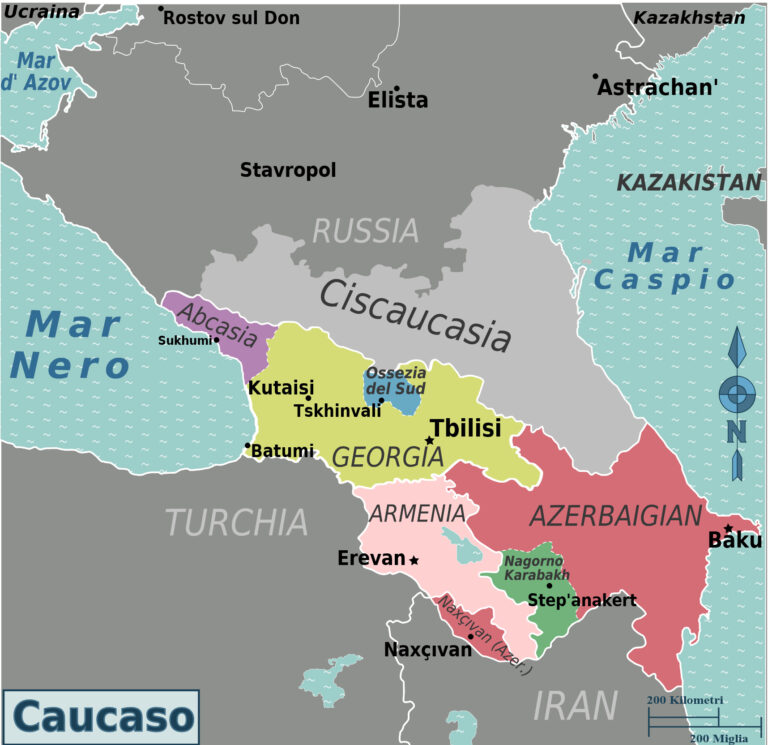 The mosaic of the Caucasus Nations
The mosaic of the Caucasus Nations
Then there are some nations de facto, but not officially because they are almost recognized by none: I am referring to Abkhazia and South Ossetia that separated from Georgia, and Nagorno Karaback an area with an Armenian majority in Azerbaijani territory, which has declared itself independent. And, finally, there are states that today are not, I am referring to the republics of Ciscaucasia such as Dagestan, Chechnya, Ingushetia and North Ossetia, which are included in the Russian federation.
It is topical that this ethnic and cultural plurality has triggered conflicts which in Georgia for example have led to the bloody separation of Abkhazia and South Ossetia.
In the 1990s, during the separatist war, the Abkatians carried out an ethnic cleansing of the Georgians living in the area. A Georgian girl told me that her parents who lived in Abkhazia had to run away when her mother was pregnant. For what happened, she blames Russia.
This situation is indeed blamed on Russia which protects and supports the breakaway regions. Indeed, political relations between Georgia and Russia are very tense today.
It is not unusual to find manifests like this that accuses Russia for occupying 20 percent of Georgian territory, implicit reference to Russia’s control over Abkatia and South Ossetia.
On my travel to Georgia there was unrest in front of parliament that was triggered by allowing a representative of Russia to give a speech in Russian in the Tbilisi parliament sitting in the seat reserved for the president of the parliament.
In the following days, I saw the protesters tents still in front of the parliament
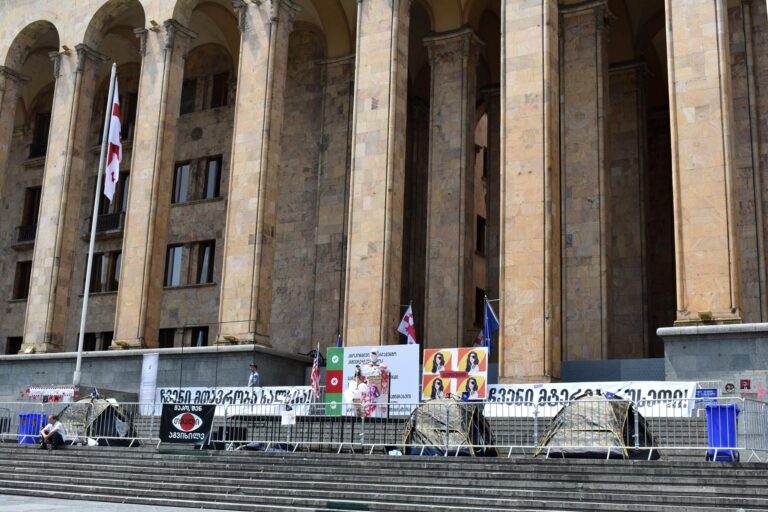 Protesters’ tents in front of parliament
Protesters’ tents in front of parliament
This photo shows a protest demonstration against Russia I came across in Kutaisi.
As you can see the crowd is not oceanic even if the protest carryed out in the central square of the second city of Georgia just a few days after the clashes in Tbilisi!
This is one of the elements that led me to think that the resentment towards Russia, which supports the ethnic claims of the separatist regions, is not so deeply rooted in the Georgian people today.
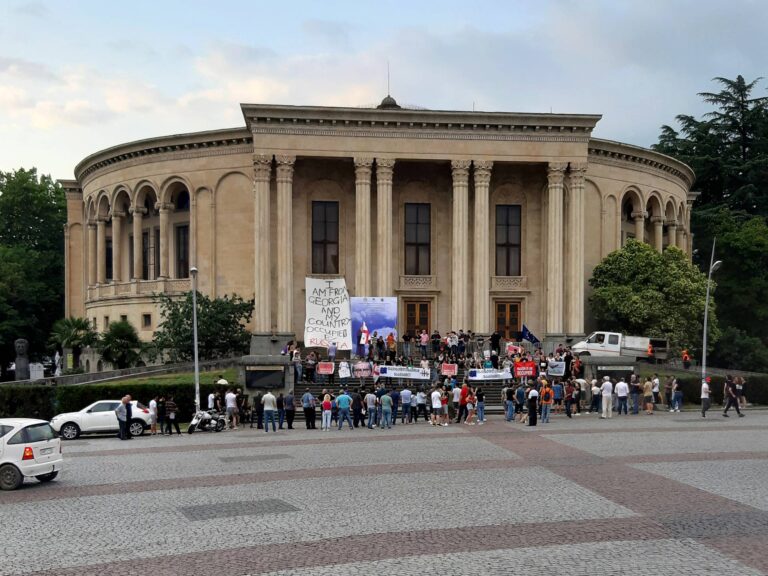 Kutaisi – protest demonstration
Kutaisi – protest demonstration
Another element is the crowd, oceanic this time, of Russian tourists who spend holidays in Georgia. Traveling around Georgia I never felt any tension towards these tourists who are indeed very welcome and Georgians speak to them without any problem in Russian.
Even the Georgian girl I spoke to, daughter of Abkhaz refugees, explained to me that the Russians, are good people, that they are welcome in Georgia, and that the Georgians have absolutely nothing against them. Instead, Georgians are angry with the Russian government for its imperialist policies. Nothing to do, for example, with what I felt in my travels to Iran, where in my judgment the resentment of Iranians towards Saudi Arabia does not concern only the government, but I felt it deeply rooted in the population. (Try asking an Iranian what he thinks of the Saudis)
Indeed, it may seem strange, but the ethnic tensions in the Caucasus took place quite recently.
This is Akhaltsikhe, in southwestern Georgia, an area where a large Armenian community lives which today would like to break away from Georgia to join neighboring Armenia.
I wanted to visit Akhaltsikhe because, besides being off the main tourist routes, in ancient times it was a symbol of peaceful coexistence between different ethnic groups and religions.
I wanted to visit Akhaltsikhe because, besides being off the main tourist routes, in ancient times it was a symbol of peaceful coexistence between different ethnic groups and religions.
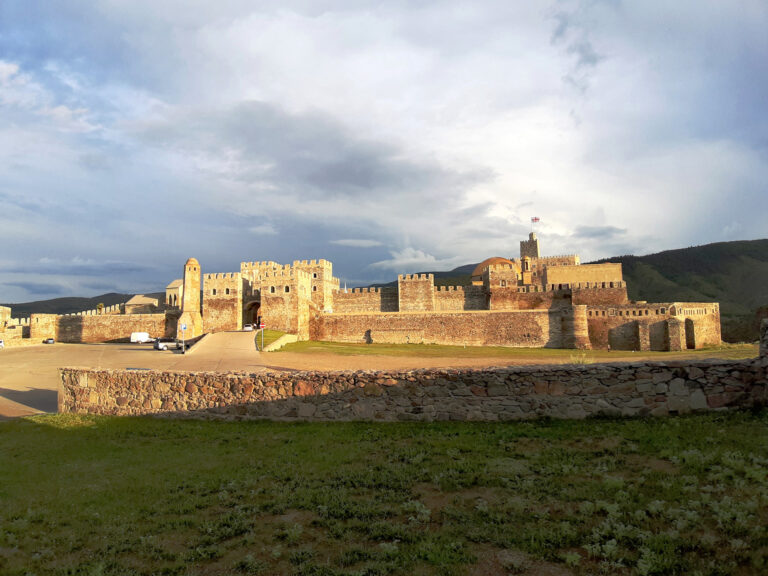 The castle of Rabati – symbol of tolerance
The castle of Rabati – symbol of tolerance
And it housed places of worship of all religions
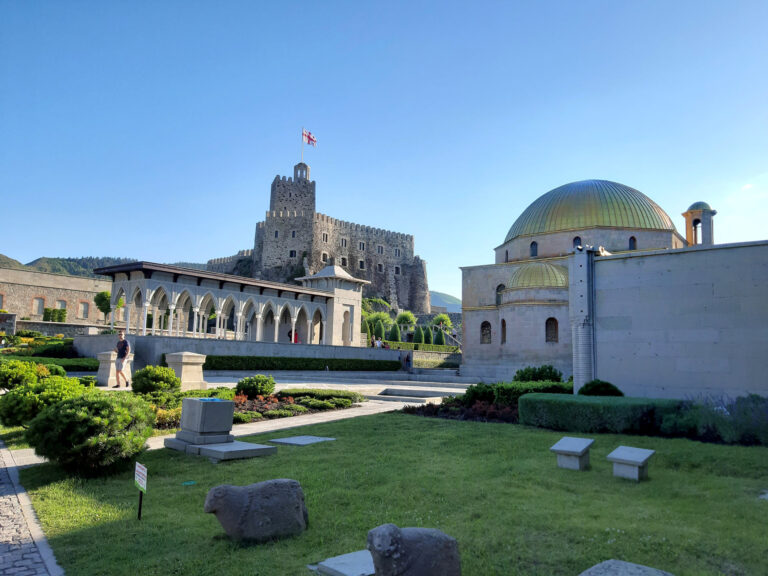 Mosque in the castle of Rabati
Mosque in the castle of Rabati
Historically, the castle of Rabati is not an exception: to give examples, Armenians and Azeris, who today are in conflict, have lived together for centuries without ethnic tension; and also ethnic conflicts between Georgians and Abkatians were also absent.
There were actually conflicts but not because of ethnic reasons.
In the Caucasus, ethnic tensions began only in the Soviet era, when the Communists adopted the policy of divide et imperat in order to secure control of the region.
For example, Stalin in redesigning the political map of the Caucasus assigned the Nagorno karaback to the Azeris despite the population being Armenian for over 90%.
After the fall of communism Russia fomented the ethnic conflicts in Transaucasia in order to maintain control.
From my researchs, results that the Russia have to mainten a sphere of influence in Transaucasia for maintaining stability in Ciscaucasia.
And in the face of that, how has the West behaved?
Initially let it happen. Then, after ’94, when was understood that Russia was reconstituting its influence, the west was interested to Georgia beacuse of its strategic position in anti-Russian key: it was understood that a stable and pro-Western Georgia would be an ideal territory for transfering oil resources from Azerbaijan to Turkey and Europe, avoiding passing through Russia and so taking away from Russia total control of gas and oil supplies from Central Asia and destined for Europe. Hence the subsequent American support to Sakhasvhili’s Rose Revolution.
So, in 2006 the Baku-Tblisi-Ceyhan (BTC) oil pipeline was inaugurated, which from Azerbaijan reaches the Mediterranean crossing Georgia and bypassing Russia, thus creating an alternative to the pre-existing Baku-Novorossiysk oil pipeline which instead passes through the Russia.
Moscow has firmly opposed this project.
So in summary, what happened in Georgia in the recent past? On the one hand, Russia has tried to maintain its sphere of influence in the area by fomenting ethnic tensions and supporting the breakaway regions. On the other hand, the West also took an interest in the area to guarantee oil supplies and energy security by exploiting the Georgian corridor in an anti-Russian key.
In this clash of powers, I would say that Georgia has made its choice, at least judging by the number of Europe flags waving alongside the Georgian one.
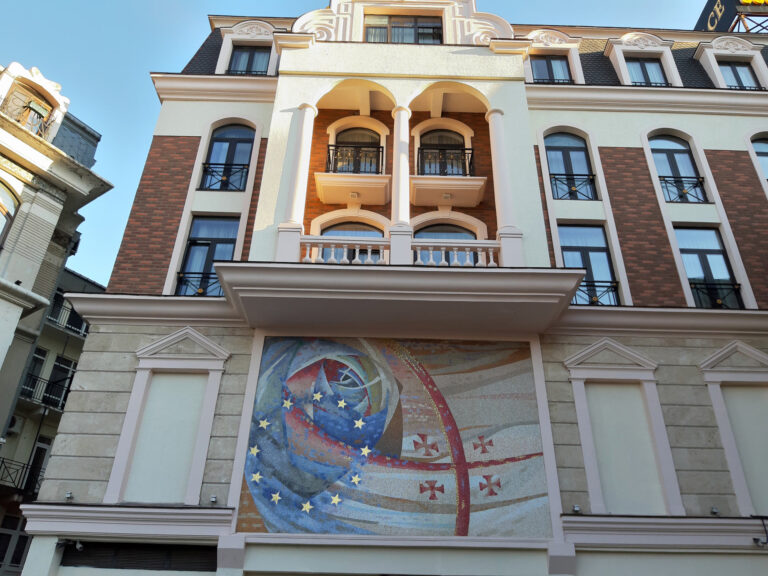 Georgian and EU flags often wave together.
Georgian and EU flags often wave together.
Indeed Georgia would like to enter Europe.
At the moment, however, this project should take into account that georgian economy is very dependent on trade with Russia. To give you the idea, these are the trucks waiting for crossing the border with Russia.
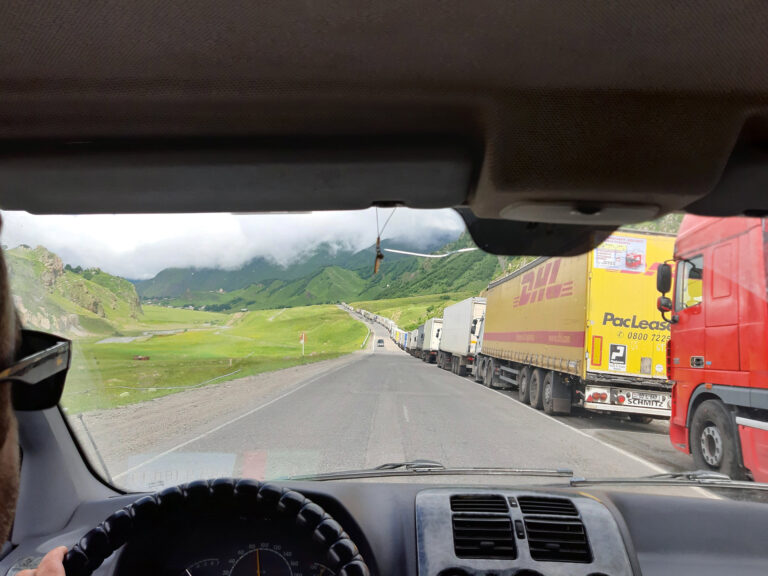 Trucks waiting for crossing border with Russia from the Darial pass (Kazbegi)
Trucks waiting for crossing border with Russia from the Darial pass (Kazbegi)
Religion
Georgians are Orthodox Christians and Georgia was one of the first states that converted to Christianity, through the work of Santa Nino.
The patron saint of Georgia, however, is St. George, who is remembered above all for the legend of Saint George and the Dragon.
The scene of the killing of the dragon is recurrent in the iconography of churches and monuments
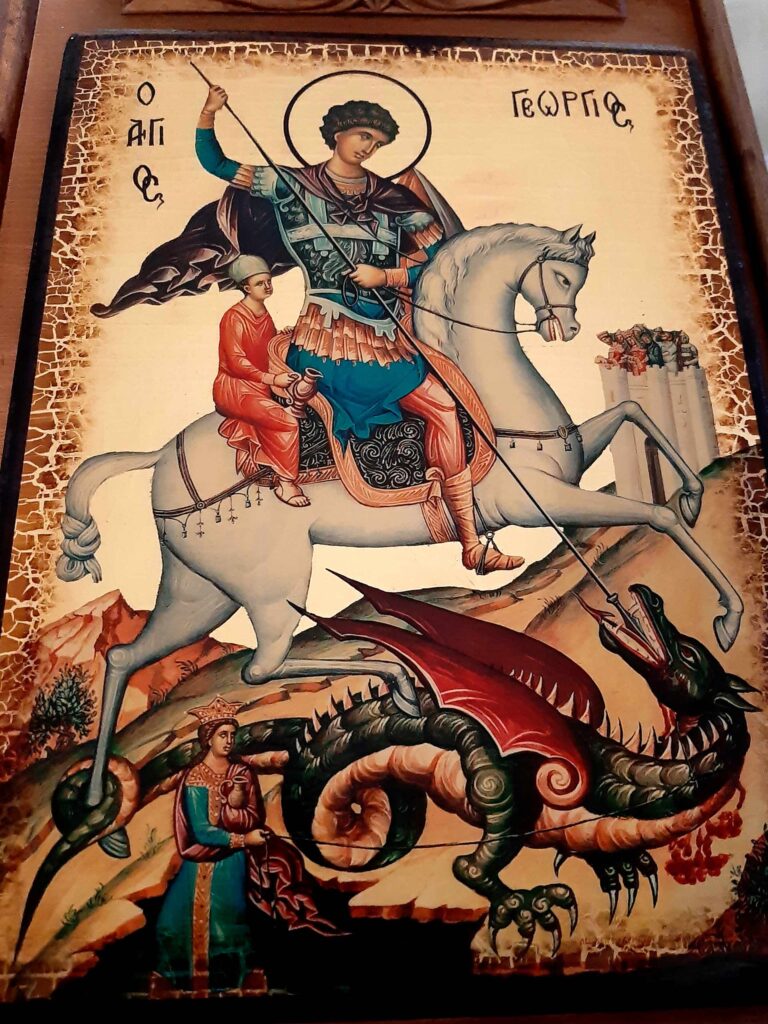 One of the many representations of the legend of St. George and the dragon
One of the many representations of the legend of St. George and the dragon
Orthodox churches are impressive because they often rise in amazing locations
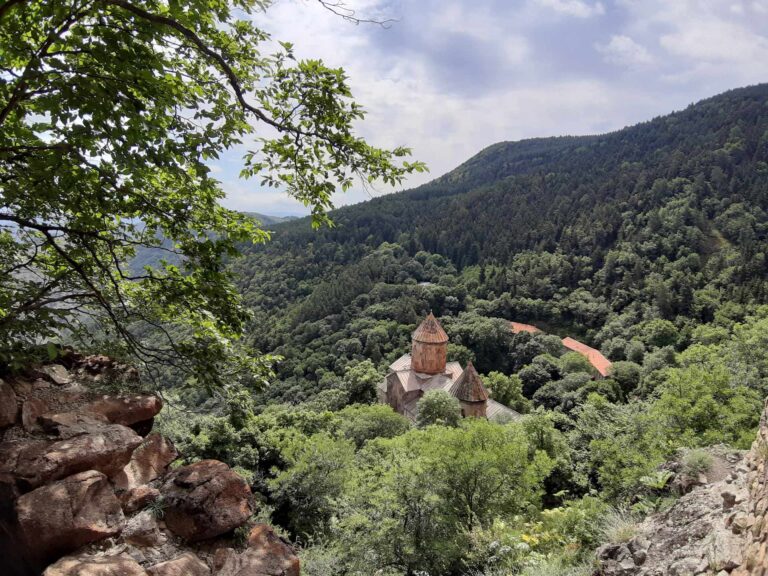 The quiet monastery of Sapara immersed in the green – Akhaltsikhe
The quiet monastery of Sapara immersed in the green – Akhaltsikhe
and some of them have preserved some beautiful medieval frescoes
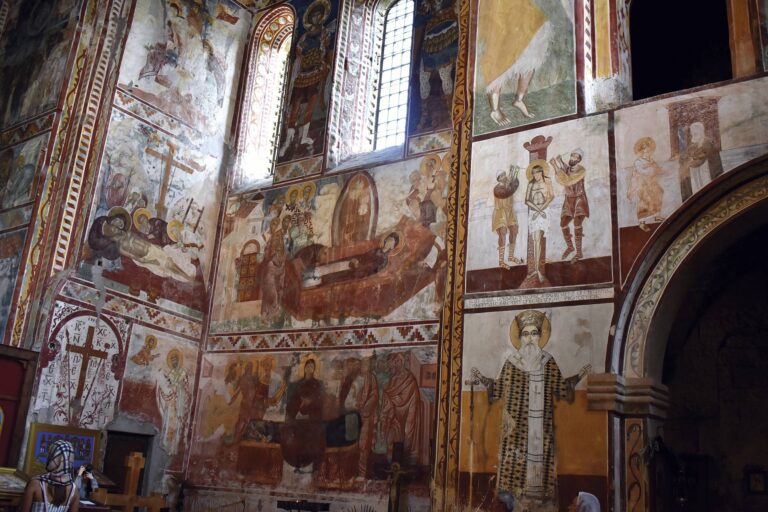 Fresco in Gelati Monastery – Kutaisi
Fresco in Gelati Monastery – Kutaisi
The Georgian Orthodox Church is autocephalous, that is Orthodox yes… but independent from other Orthodox Churches such as the Greek or Russian one; and moreover different from the Armenian Apostolic Church. Most Georgians are believers and practitioners.
In the post-Soviet era, the Tsminda Sameba (Holy Trinity) Cathedral, the largest in Georgia, was built in Tbilisi in a position that dominates the view both in the daytime and nighttime.
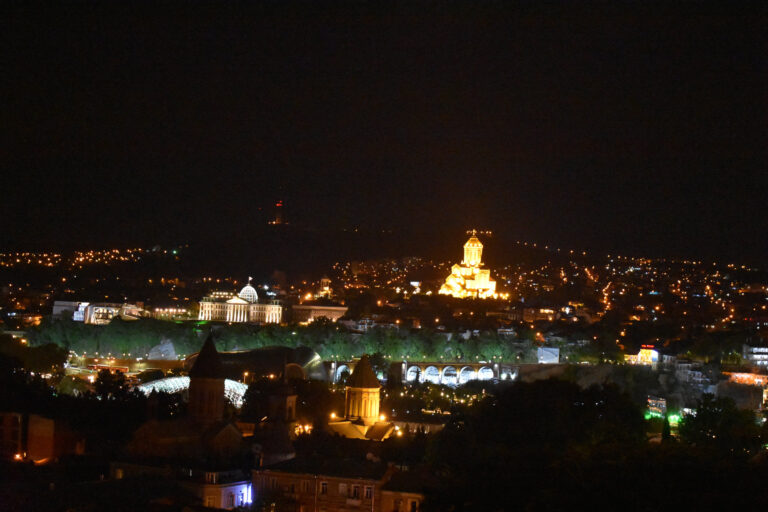 The impressive Tsminda Sameba Cathedral in Tbilisi
The impressive Tsminda Sameba Cathedral in Tbilisi
In Georgia there is also a significant Armenian minority, which recognizes itself in the Armenian Apostolic Church and an Azeri Muslim minority.
Women in Georgia
According with the Georgian tradition, women are destinated to marriage and motherhood; Usually they marry very young; I have seen several very young girls with kids in tow. To enter the Church, women are required to wear veil and a long skirt.
According to my research. in Georgian society women must come to marriage virgin while for men it is often the family that induces the male to lose his virginity in a brothel.
Cheating on wife is accepted; but not the reverse.
Domestic violence is widespread, but it mostly remains unpunished because the police traditionally do not interfere in family businnes.
Divorce is allowed, but for women is a shame, while men can separate without honor problems.
From cities to villages
The two main towns of Georgia are the capital Tbilisi and Kutaisi.
Here is Tbilisi seen from one of the two surroundings hills
In addition to the Armenian Church in the foreground, the Tsminda Sameba Cathedral stands out; these monuments contrast with the Peace Bridge and the two trunks which are a conference center designed by the Italian architect Fuskas.
The central area of Tbilisi is beautiful and definitely worth a visit.
This is still Tbilisi, but three metro stops from the center
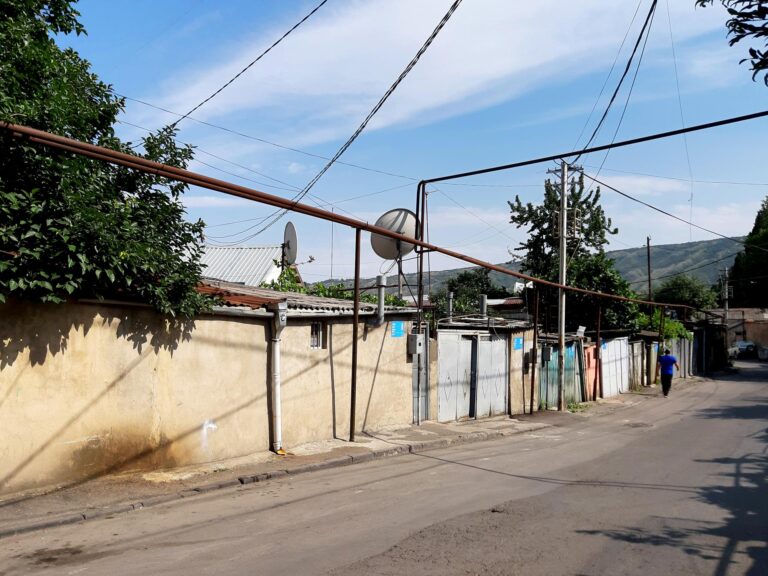 Shacks in the suburbs of Tbilisi
Shacks in the suburbs of Tbilisi
What stands out in Tbilisi is not only the contradiction between the sumptuousness of the center and the poverty of some suburbs but also the variety of styles ranging from traditional to Soviet barracks to the most daring modern.
For example, right close to the traditional building of the Armenian Church, there is this other building, part of the complex that houses the sulphurous baths which definitely echoes the Persian style
If you don’t believe it, look at this photo I took in Isfahan in Persia, that is, Iran
About Kutaisi I want to show the landmark of the city center: the pretty Colchis fountain adorned with magnified reproductions of jewels of ancient Colchis dating back to over 4000 years ago and found in archaeological excavations.
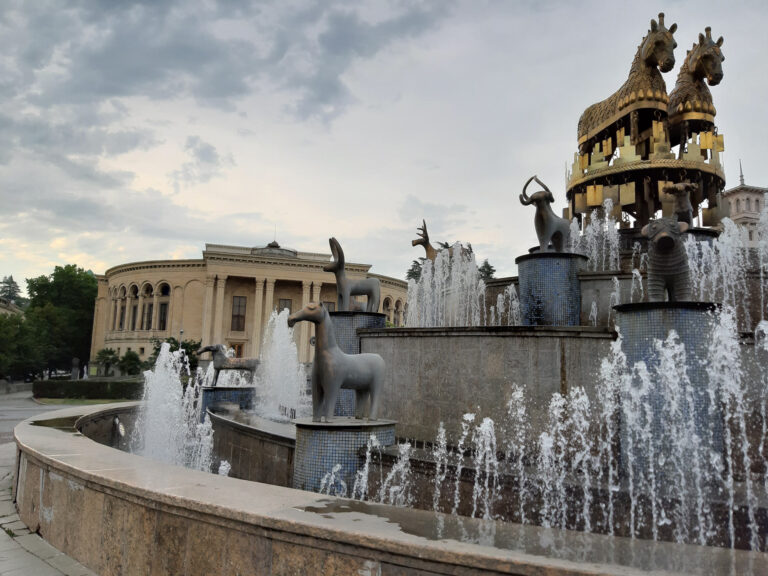 The Colchis fountain – Kutaisi
The Colchis fountain – Kutaisi
About variety of styles, look at this neoclassical arcade, just in front of Colchis fountain
In mountain areas of course the urban landscape change.
Very special are the several defensive towers erected in Svaneti, region of the Greater Caucasus, nowadays destination for amazing trekking. It seems that every house has its own tower.
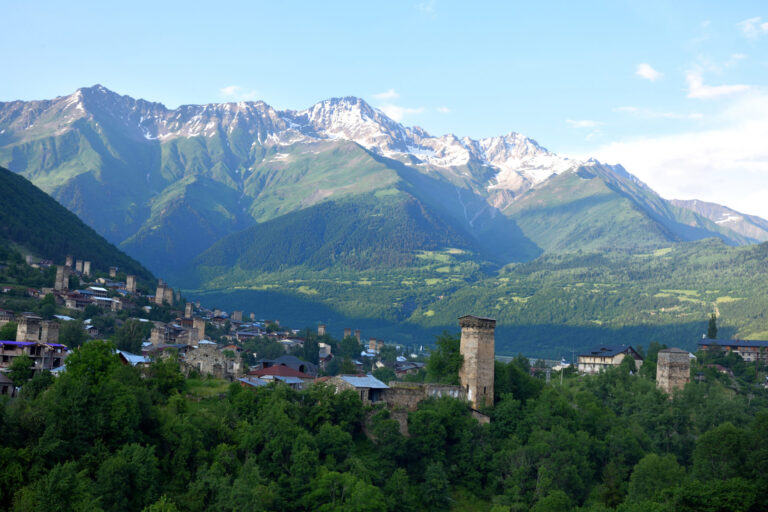 The several Svan Towers in Mestia – Svaneti
The several Svan Towers in Mestia – Svaneti
The main center of Svaneti is the town of Mestia, hub for trekking tourism.
But If you want to visit a still authentic Svan village, go to Usghuli, 50 km from Mestia (one hour and a half by 4WD)
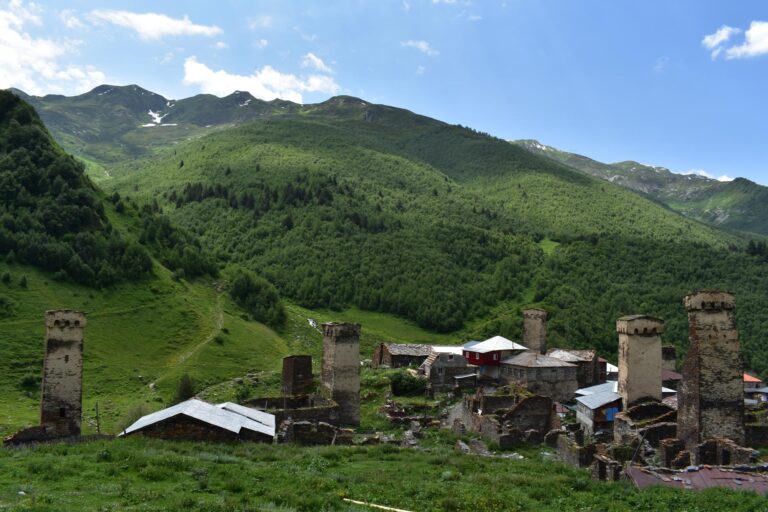 The authentic Svan village of Usghuli – Svaneti
The authentic Svan village of Usghuli – Svaneti
Finally there is the countryside; I have been in the Lesser Caucasus one, where small villages like this arise.
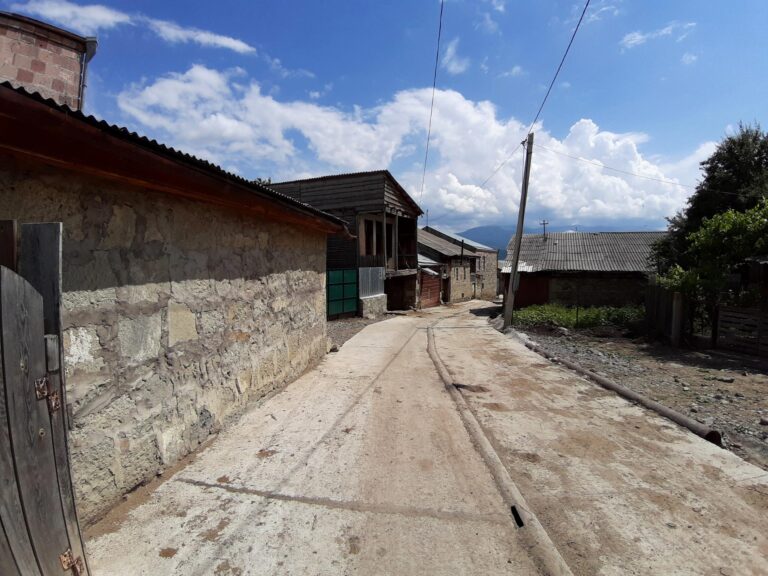 The small village Tskruti – Lesser Caucasus
The small village Tskruti – Lesser Caucasus
The small village Tskruti – Lesser Caucasus
often separated by country roads passing in the middle of nowhere.
In such places, completely off the tourist route, I discovered the most authentic Georgia, and the warmth and hospitality of Georgians.
Cuisine
The Georgian national specialty is khachapuri which is a flatbread filled with cheese.
A real hit as it is served everywhere: in restaurants, bakeries and even at breakfast.
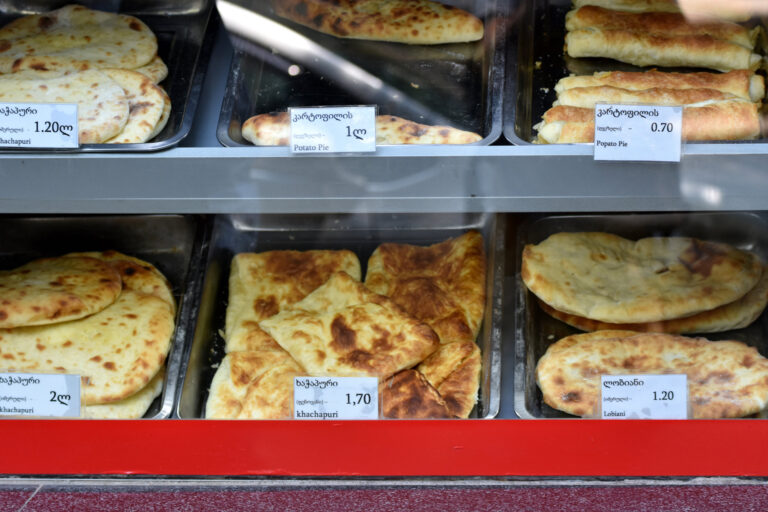 The ever present khachapuri in bakeries
The ever present khachapuri in bakeries
There are different ways for cooking khachapuri depending on the different areas of the country. They can differ in the kind of cheese used; in the khachapuri acharuli an egg is placed on top with melted butter. Cheese is widely used; this one is for sale everywhere; you will eat a lot of it
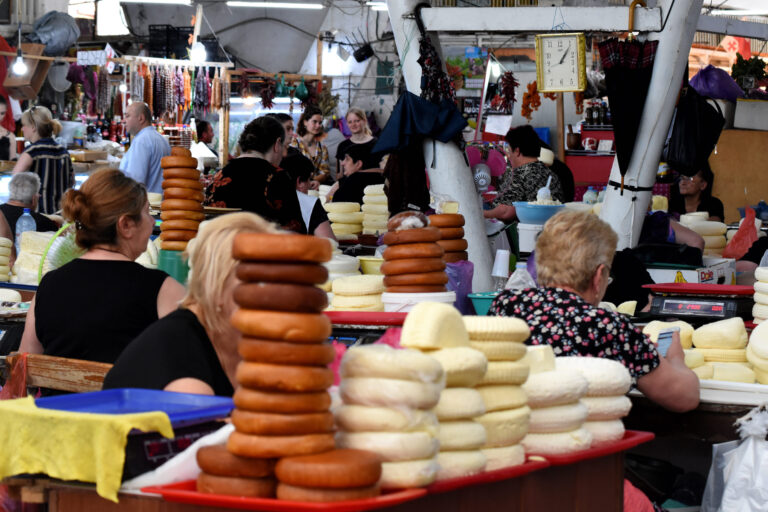 Cheese wheels at Kutaisi market
Cheese wheels at Kutaisi market
Here, are the wheels produced in the mountain left to mature outdoors.
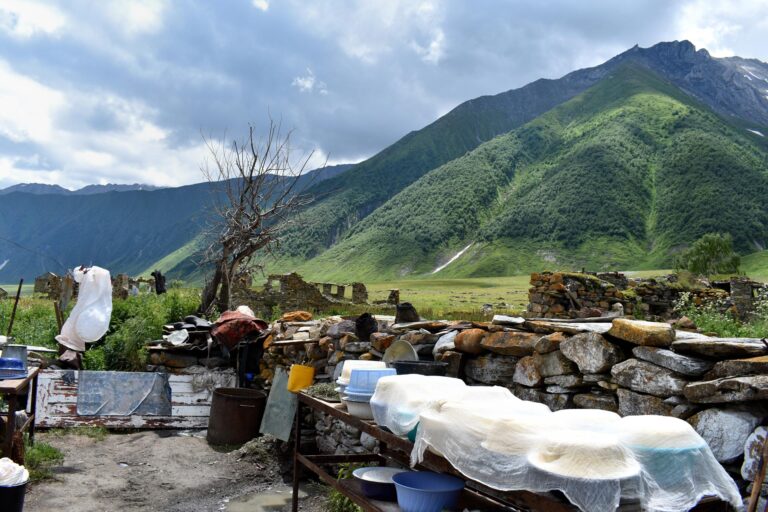 Cheese maturing – Truso Valley – Kazbegi
Cheese maturing – Truso Valley – Kazbegi
The other national specialty is the Khinkàli, giant ravioli that contain spiced meat immersed in a broth. Variants are with potato or mushroom filling. Really very delicious and very cheap.
Dishes are cooked with spices that you can easily buy at the market
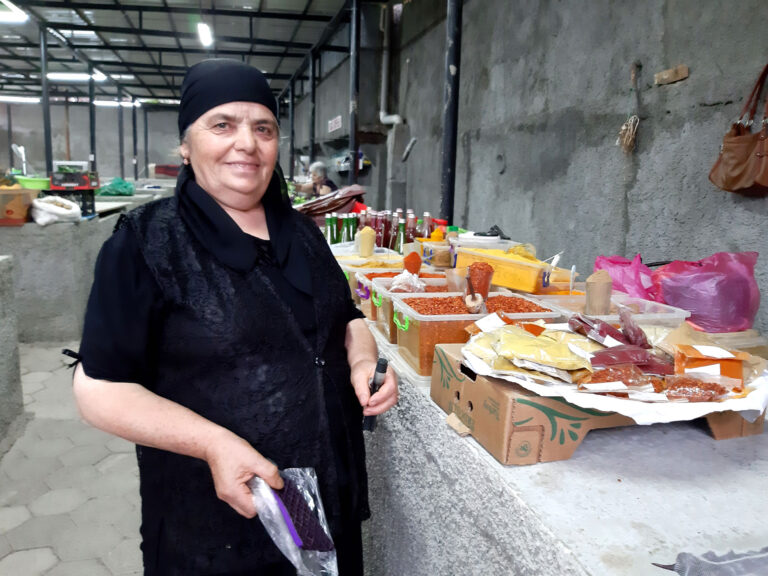 Spices for sale at Batumi market
Spices for sale at Batumi market
And the market is also full of stalls selling churchkhela which is a walnut bar coated with a kind of caramel made with grape juice that is hung like a salami.
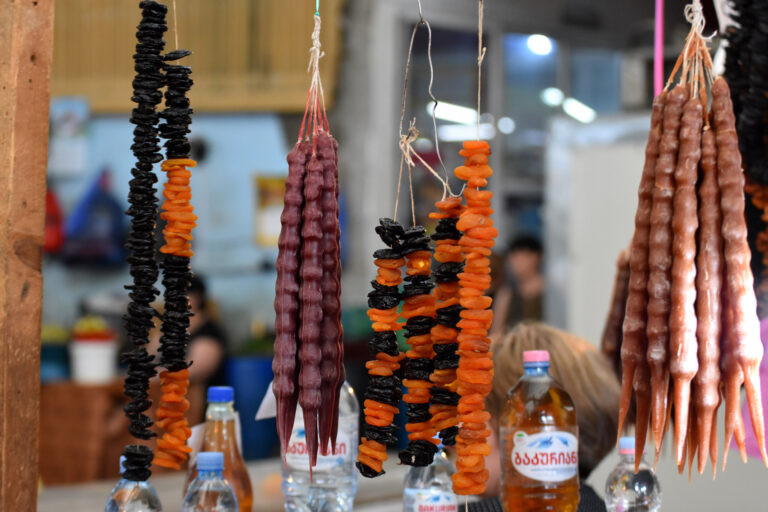 Churchkhela hung at the Kutaisi market
Churchkhela hung at the Kutaisi market
In all countries I visited in recent years, there has always been a national drink in the background. In Georgia there are even two.
One is Borjomi water from the name of the town where the springs are located. It is a natural effervescen, saline tasting water. Widespread and very appreciated throughout Georgia.
The other, is a drink that seems to have been discovered in the Caucasus and that has traveled around the world: wine.
I say it was discovered in the Caucasus because the oldest traces of winemaking have been found here dating back 8 thousand years ago.
And wine in Georgia is a very serious matter; as well as in wine shop you will also find it on the road served on tap by barrels like this one.
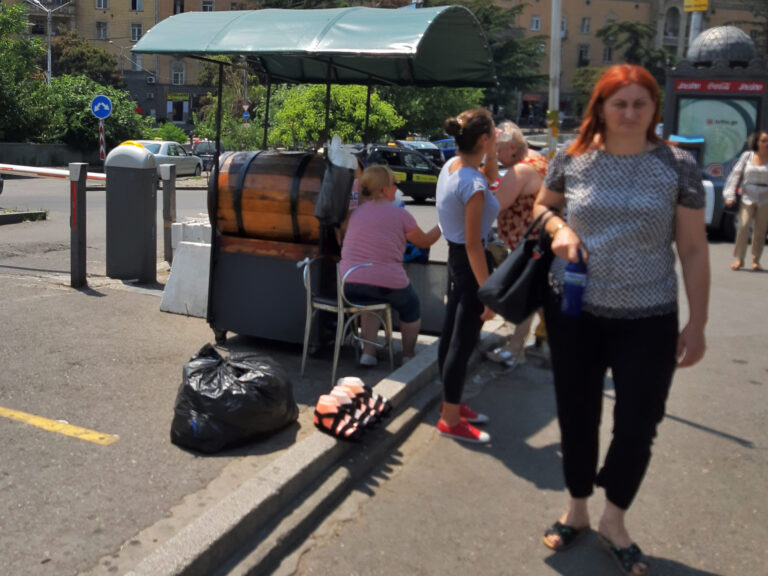 Wine on tap on the road – Tbilisi
Wine on tap on the road – Tbilisi
Finally, the tradition also concerns liquors; the most common is the Chacha which is made both industrially and by hand. The handcraft Chacha is usually more alcoholic and reaches 60° C.
Speaking of handcraft liquors, in a Lesser Caucasus village I was offered a liquor tapped from this handcraft distiller located in the backyard where a truck tank filled with water was used as a cooling system!
Traveling in Georgia
The most used means of transport is the marshrutka, that is a minibus that reaches the towns and most of the villages
The roads are paved and in good condition, even those that reach the most important mountain resorts. From then on, however, they often become unpaved and very exposed without protection. I don’t dare to think what happens when it rains!
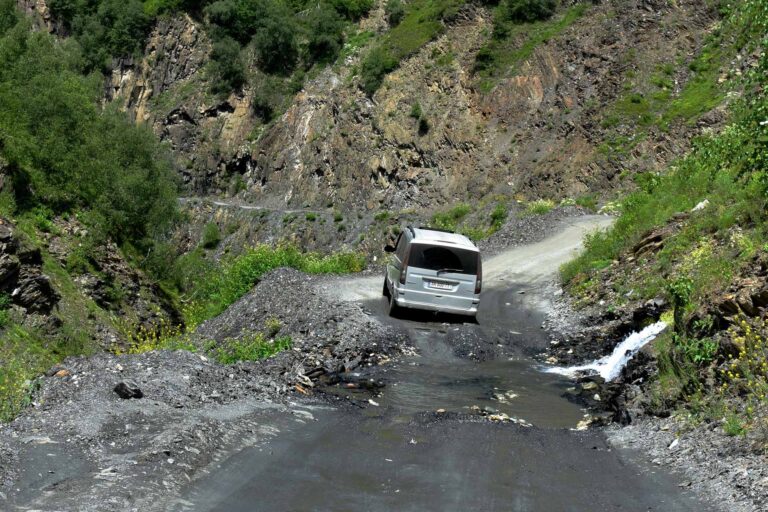 The road from Mestia to Usghuli – Svaneti
The road from Mestia to Usghuli – Svaneti
The Marsrutki do not arrive here and therefore you can only travel by expensive taxis. And this is the main problem for hiking in these areas: get the starting point of the trails can be expensive if you can’t share the cost with other passengers.
And what’s more, I haven’t seen anyone renting a motorbike, a bike or a car to reach at least the most easily accessible areas independently.
On the other hand, public transport is very cheap; with 10 Lari, just over 3 euros at the time of my trip, you travel 5 hours by Marsrutka.
Then there is a railway line that connects the main towns, but I didn’t get it because the trains are few and I have read also slow.
However, train is certainly the safest way to travel, also because Georgians have a rather reckless driving and the Marsrutki drivers are no exceptions.
Moreover, just outside the towns, you can suddenly meet herds of animals in the middle of the road . Even on high-flow roads with consequent sudden braking.
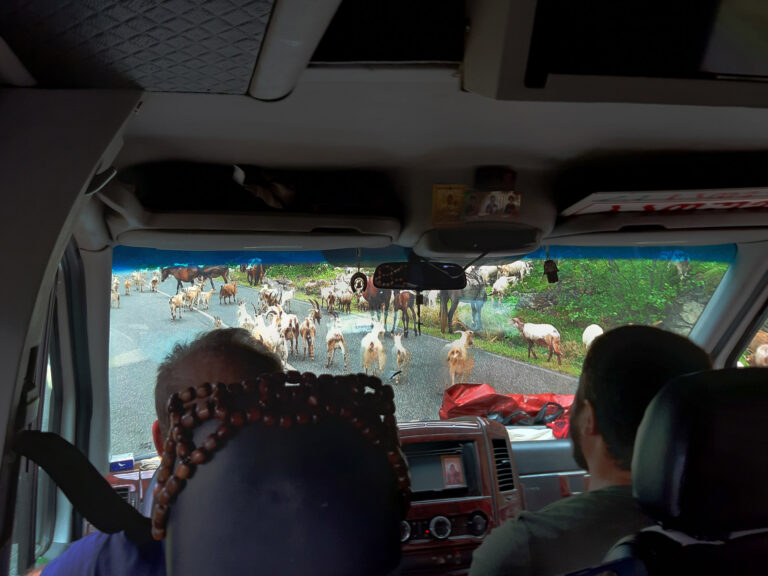 Herds of animals on the road are a danger
Herds of animals on the road are a danger
Tbilisi has the subway: very convenient, efficient and even here very cheap; ticket costs 0.5 Lari, about 0.16 euro.
Lastly, a curiosity: I have seen many cars with right-hand drive even if in Georgia you drive on the right.
This is because many cars are japanese, produced in factory with the right hand drive, so having it with the left hand drive is an optional that is charged extra. Therefore many people choose to save money and buy the car with right-hand drive.
The route of my trip to Georgia (june-july 2019)
|
1 |
fri |
Milano – Kutaisi |
|
2 |
sat |
Kutaisi |
|
3 |
sun |
Kutaisi |
|
4 |
mon |
Kutaisi – Mestia |
|
5 |
tue |
Mestia |
|
6 |
wed |
Mestia |
|
7 |
thu |
Mestia – Tiblisi |
|
8 |
fri |
Tbilisi |
|
9 |
sat |
Tbilisi |
|
10 |
sun |
Tbilisi – Kazbegi |
|
11 |
mon |
Kazbegi |
|
12 |
tue |
Kazbegi |
|
13 |
wed |
Kazbegi – Tbilisi – Akhaltsikhe |
|
14 |
thu |
Akhaltsikhe |
|
15 |
fri |
Akhaltsikhe |
|
16 |
sat |
Akhaltsikhe |
|
17 |
sun |
Akhaltsikhe- Batumi |
|
18 |
mon |
Batumi |
|
19 |
tue |
Batumi |
|
20 |
wed |
Batumi – Kutaisi – Milano |
